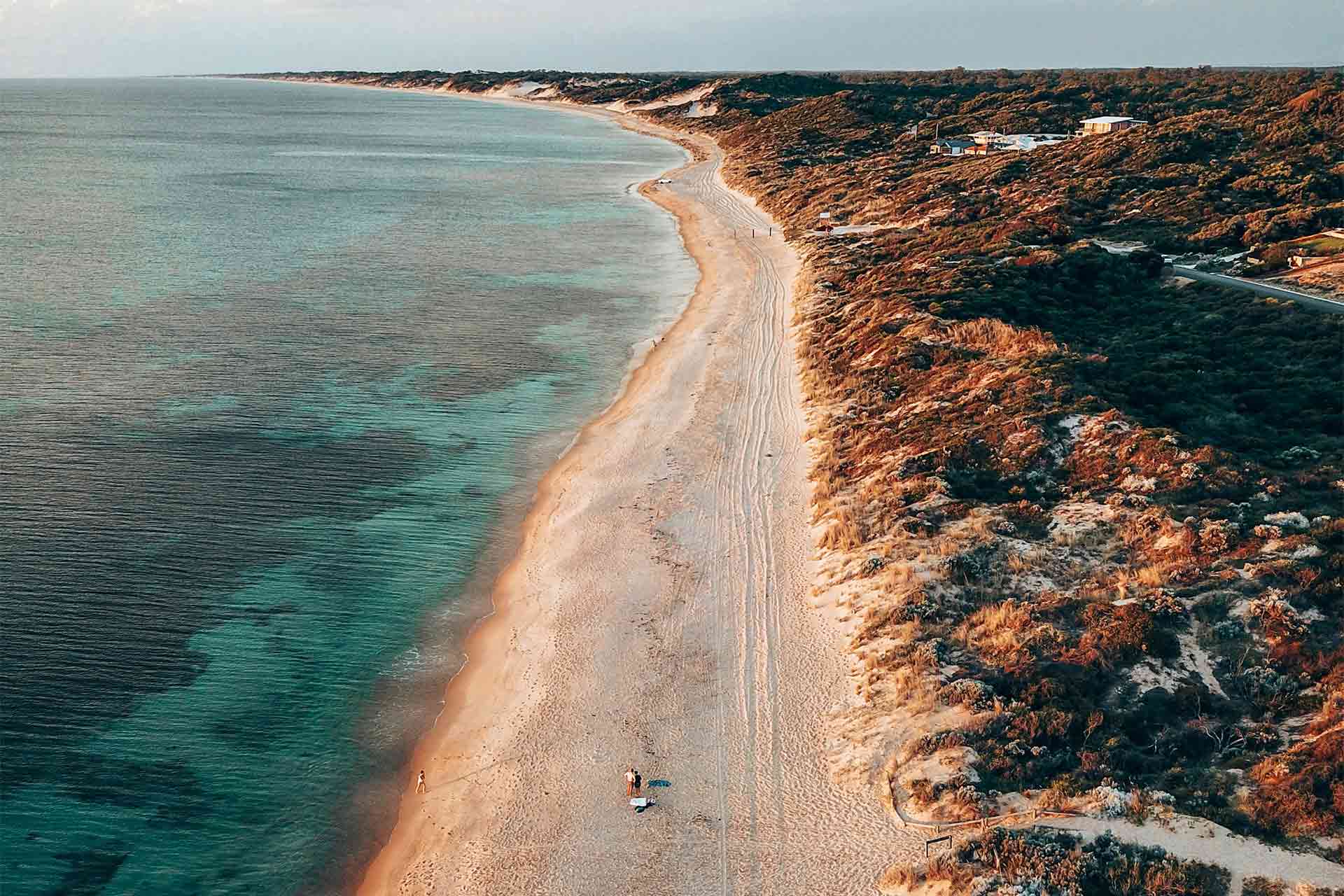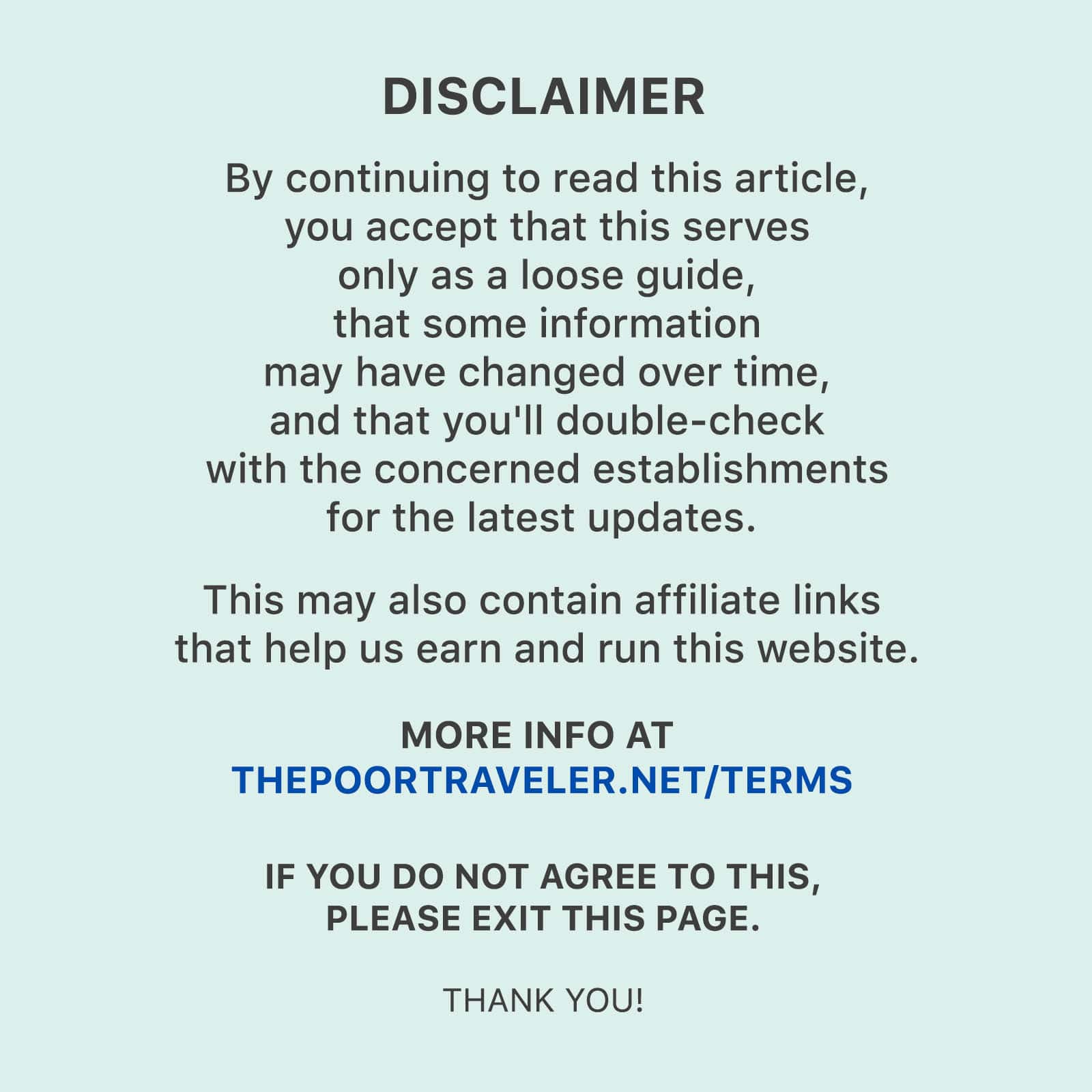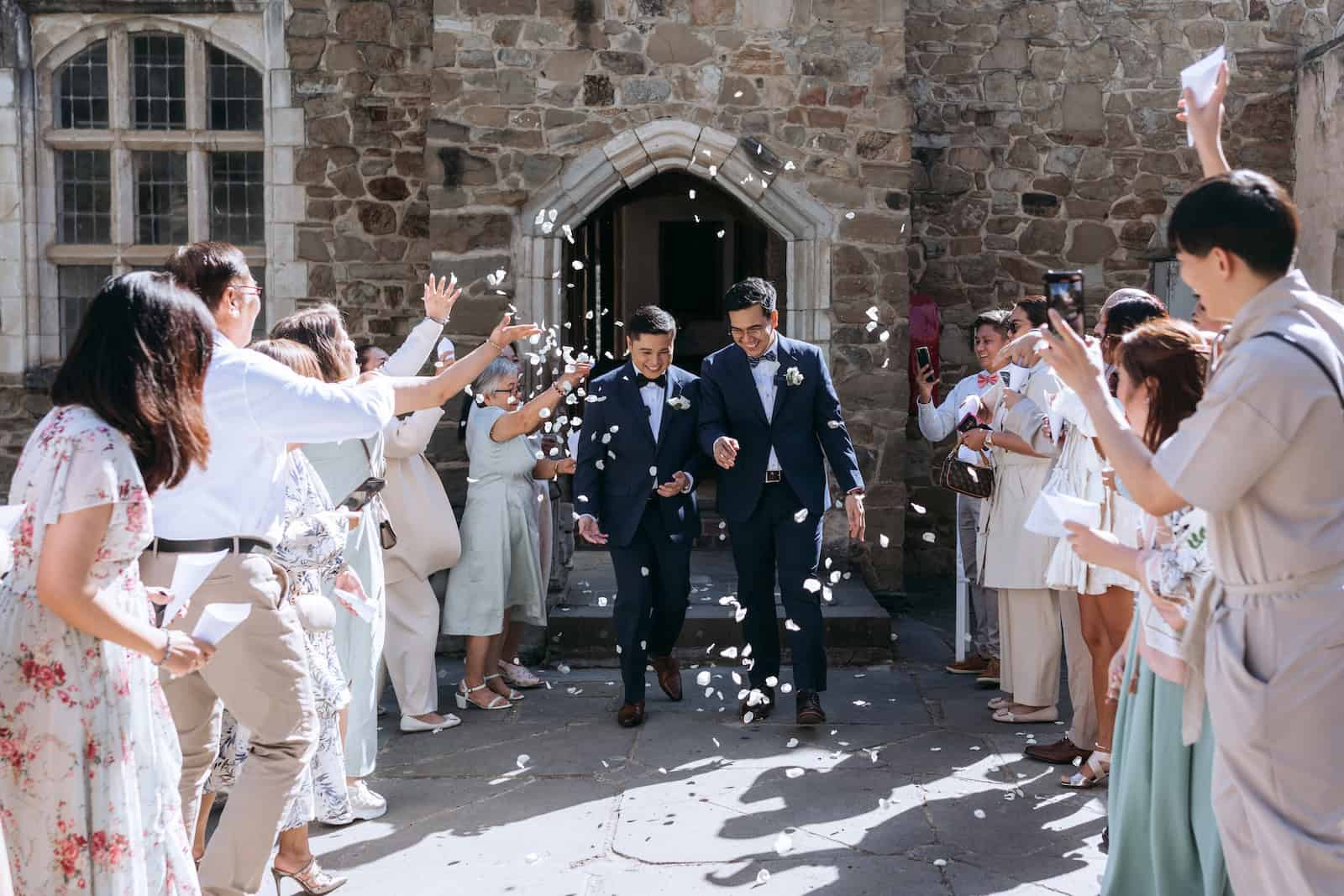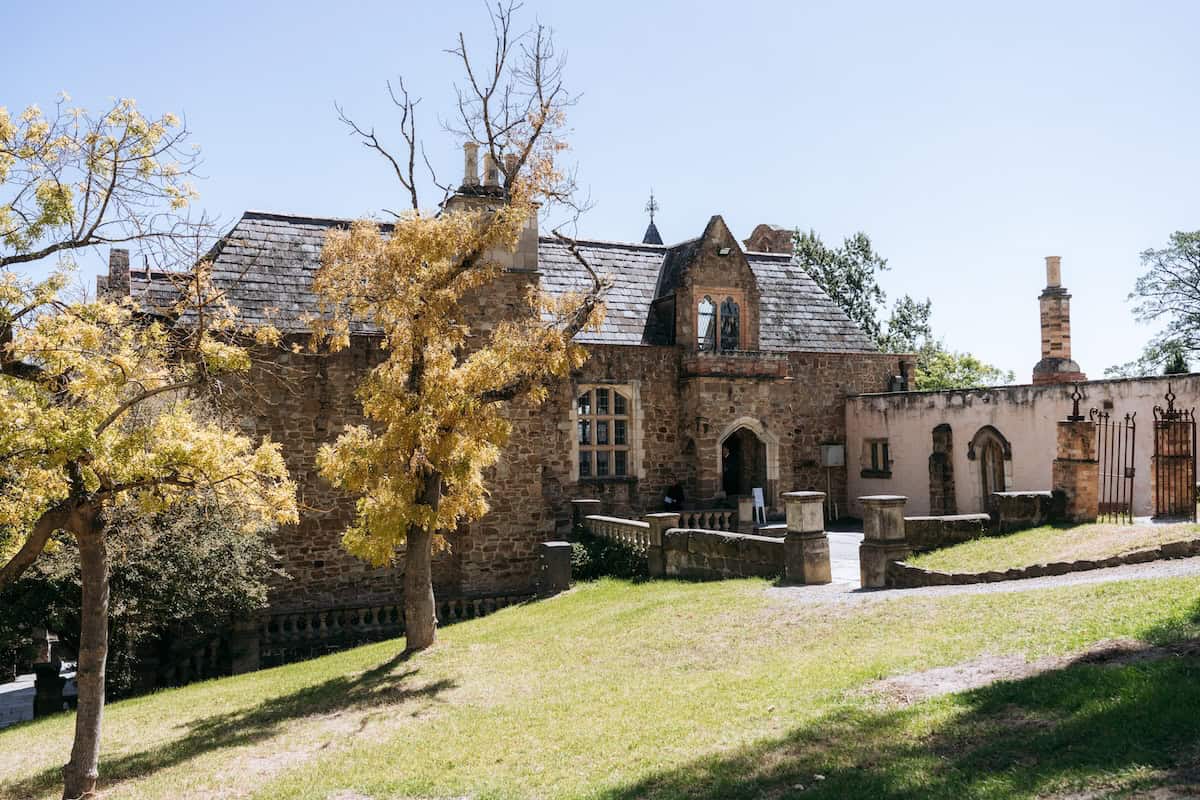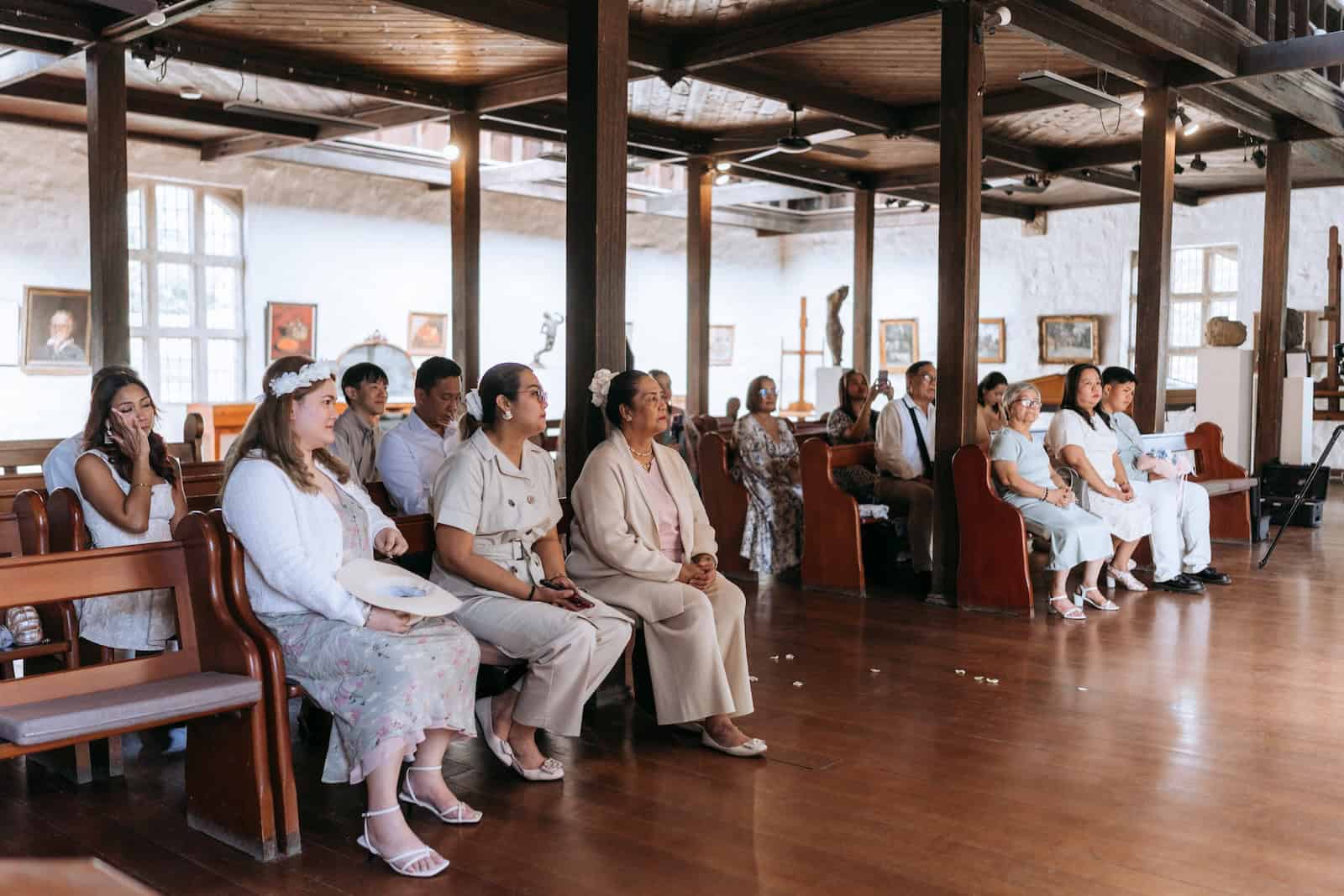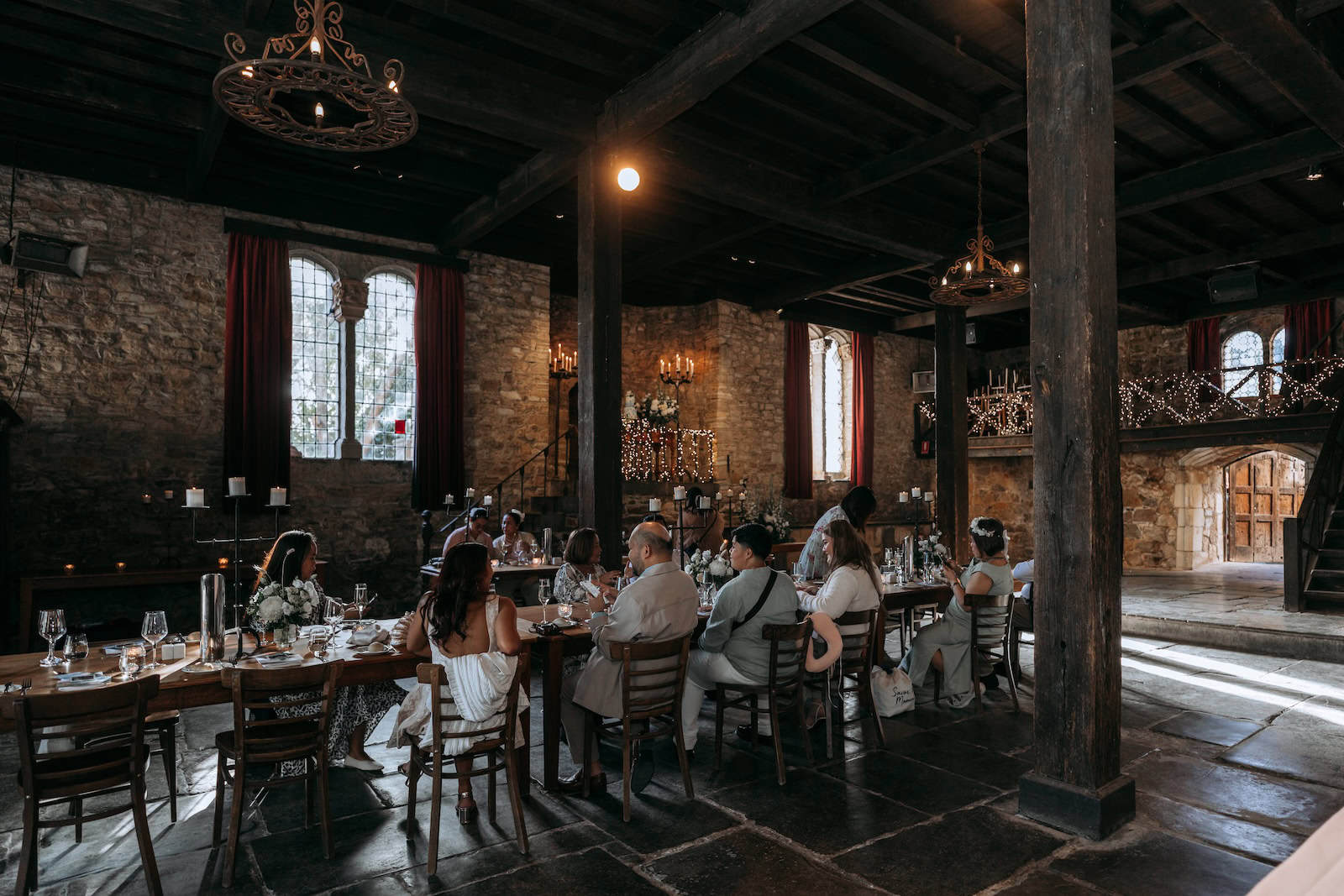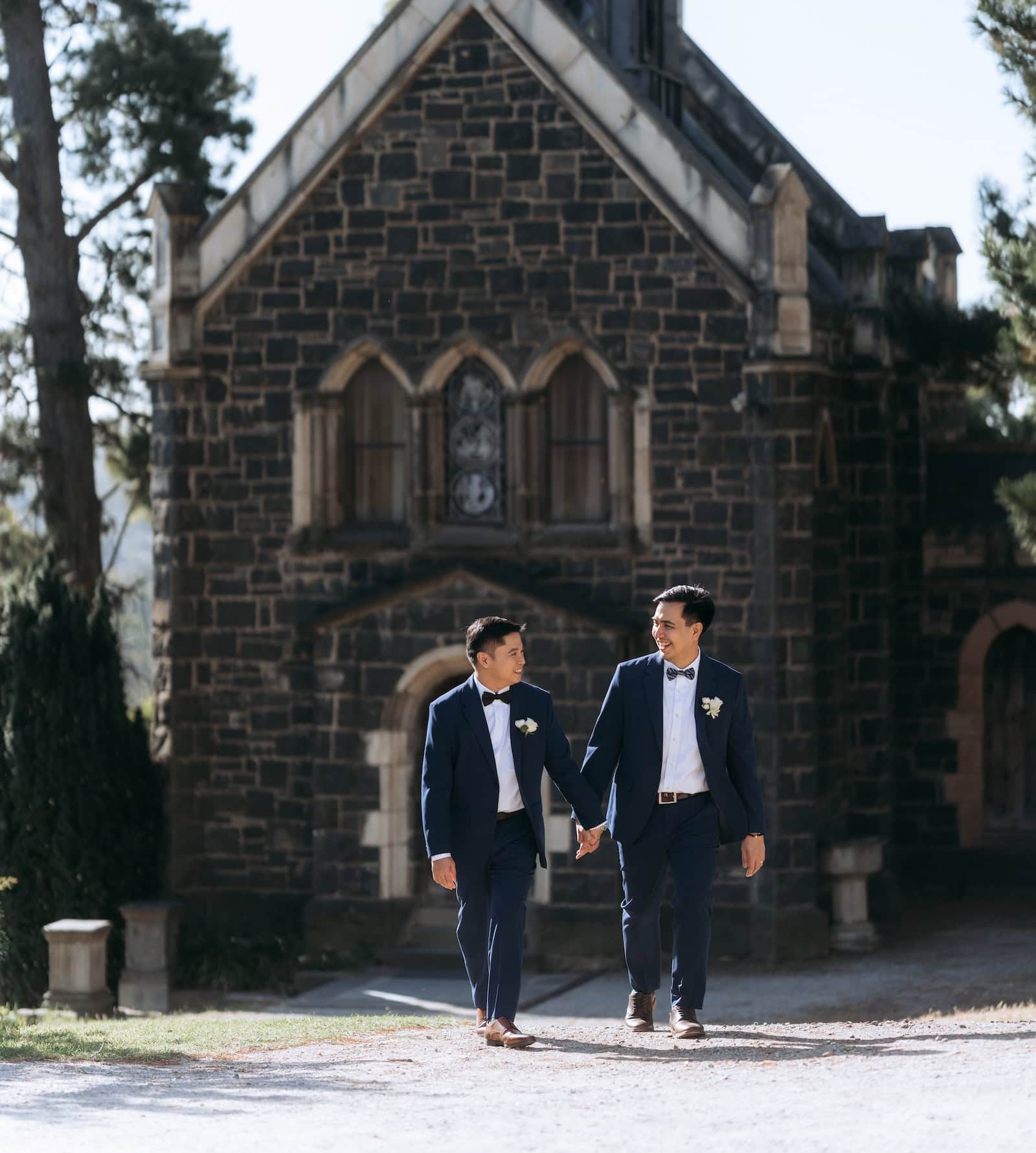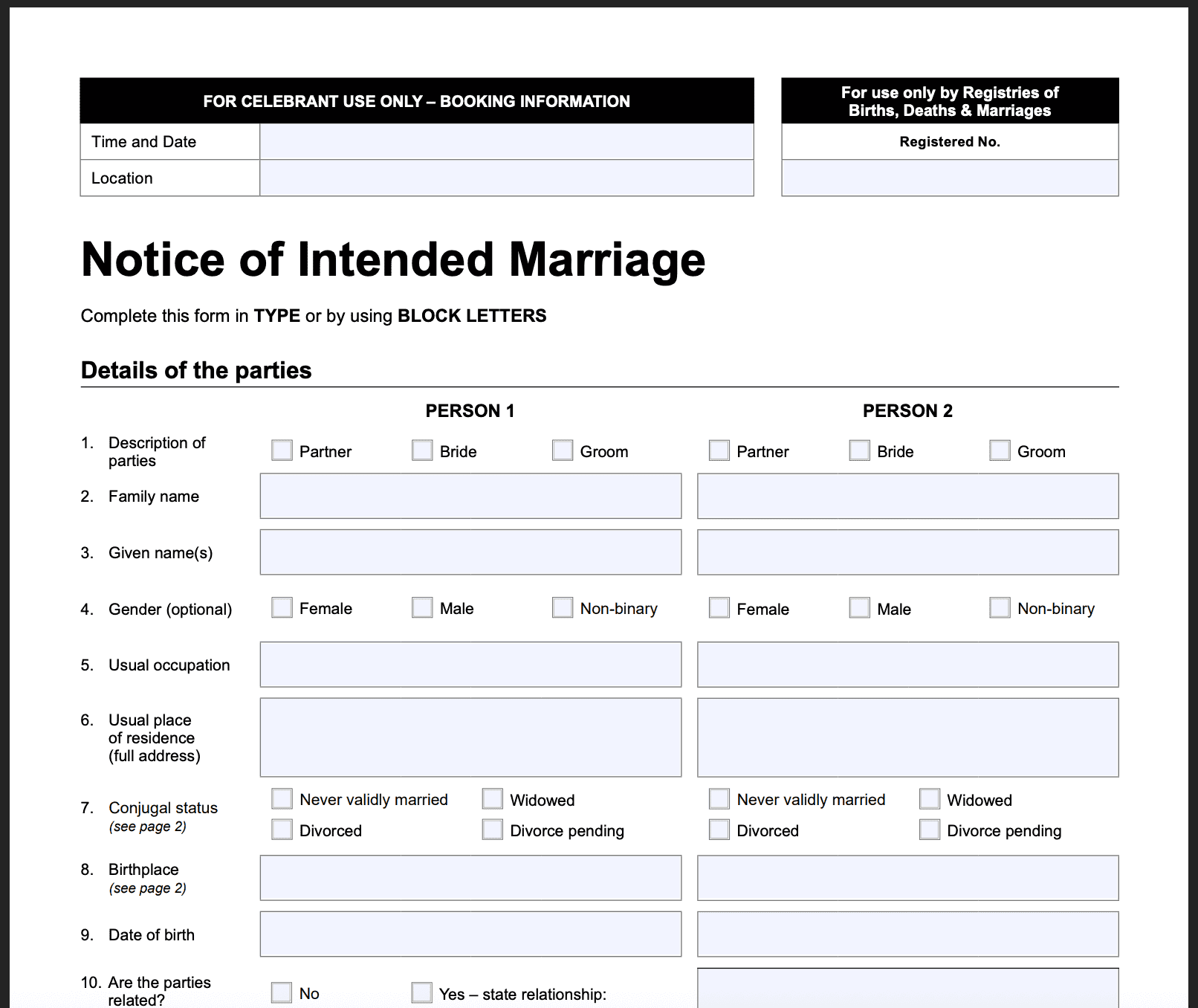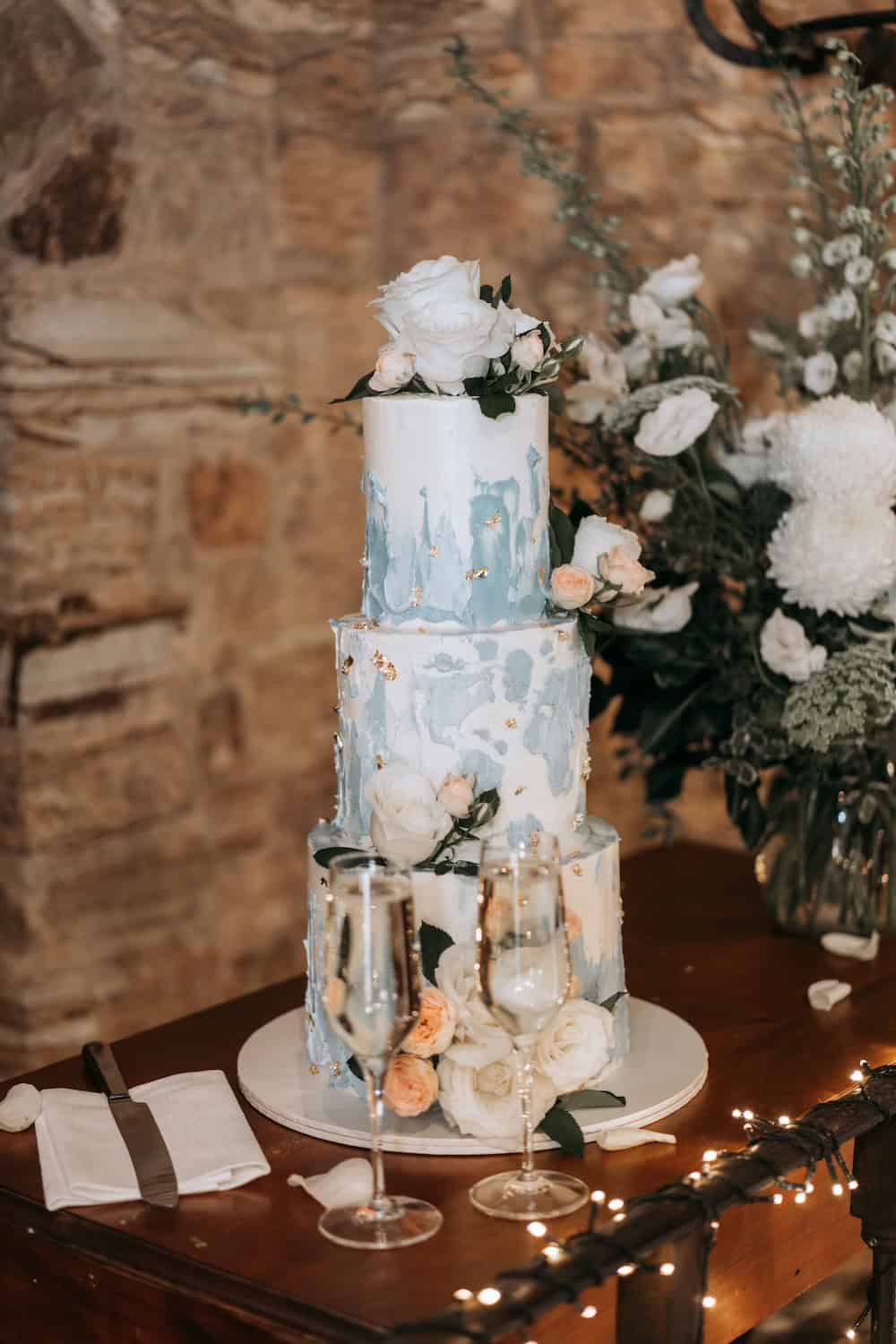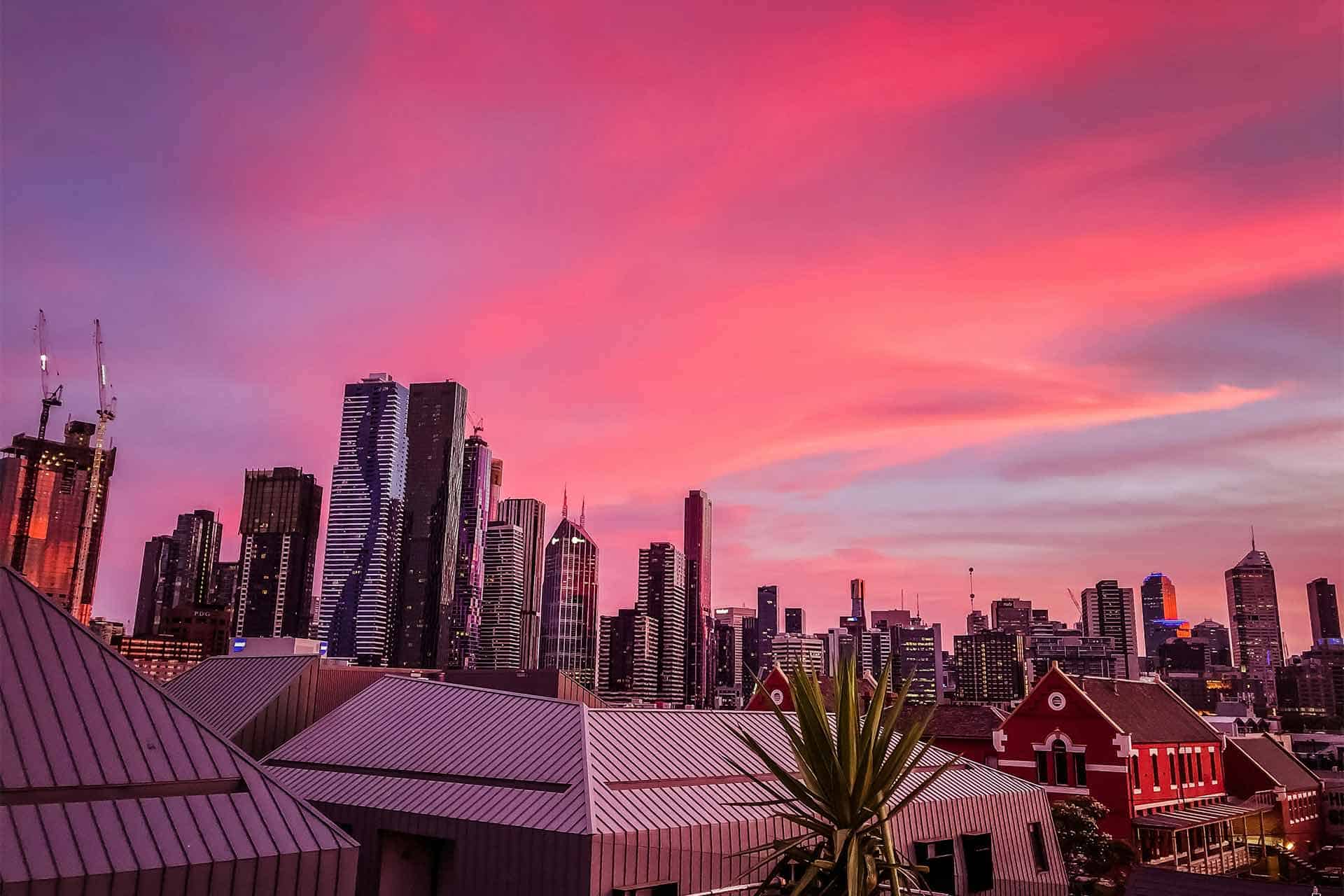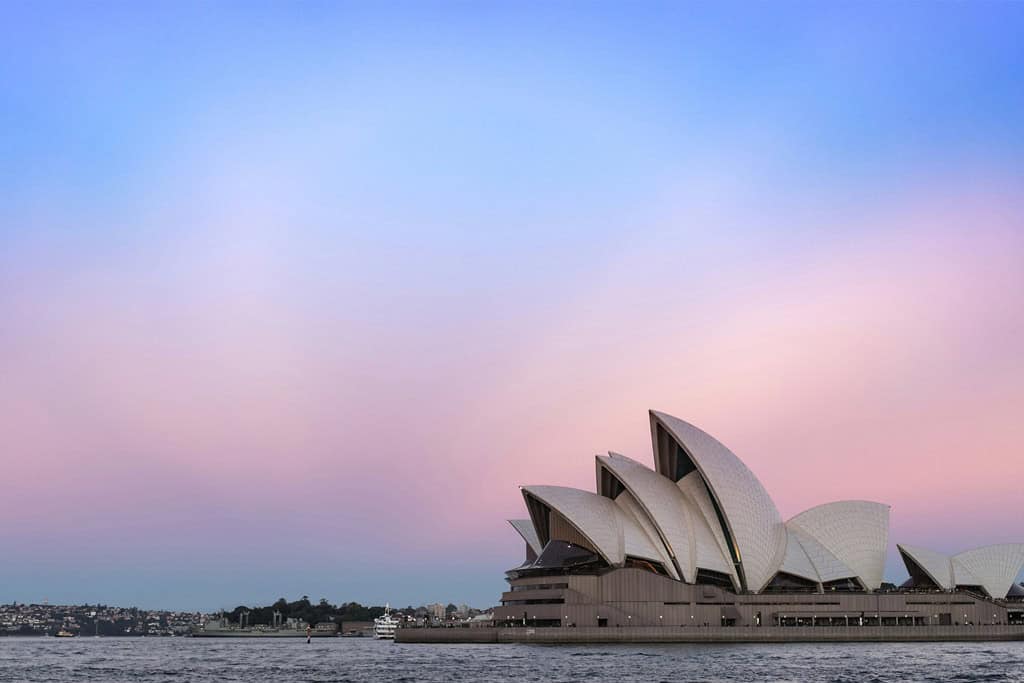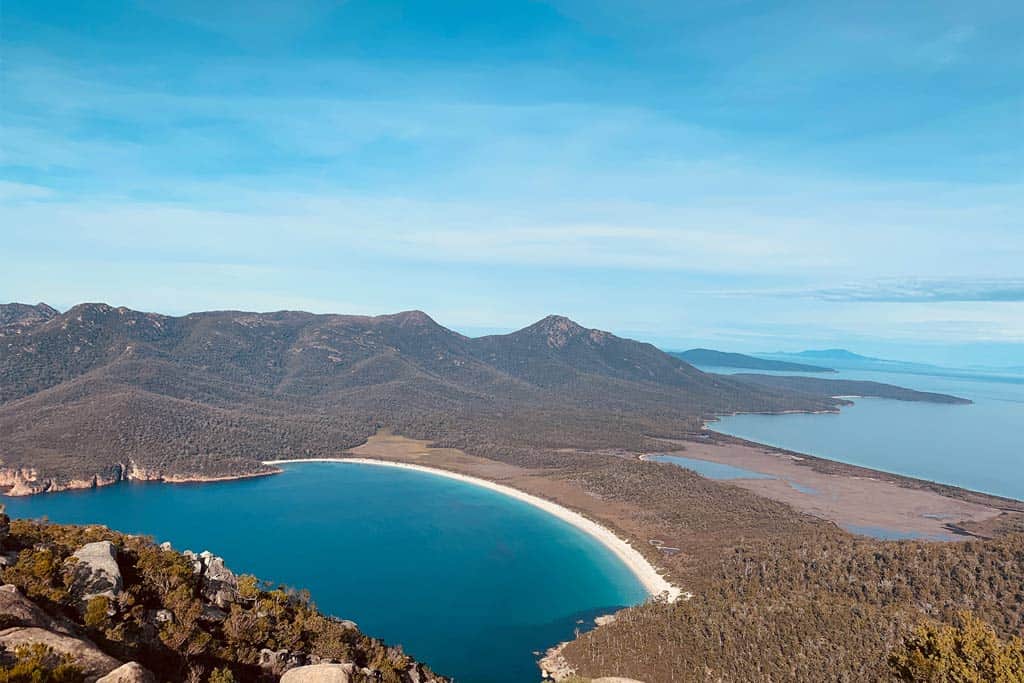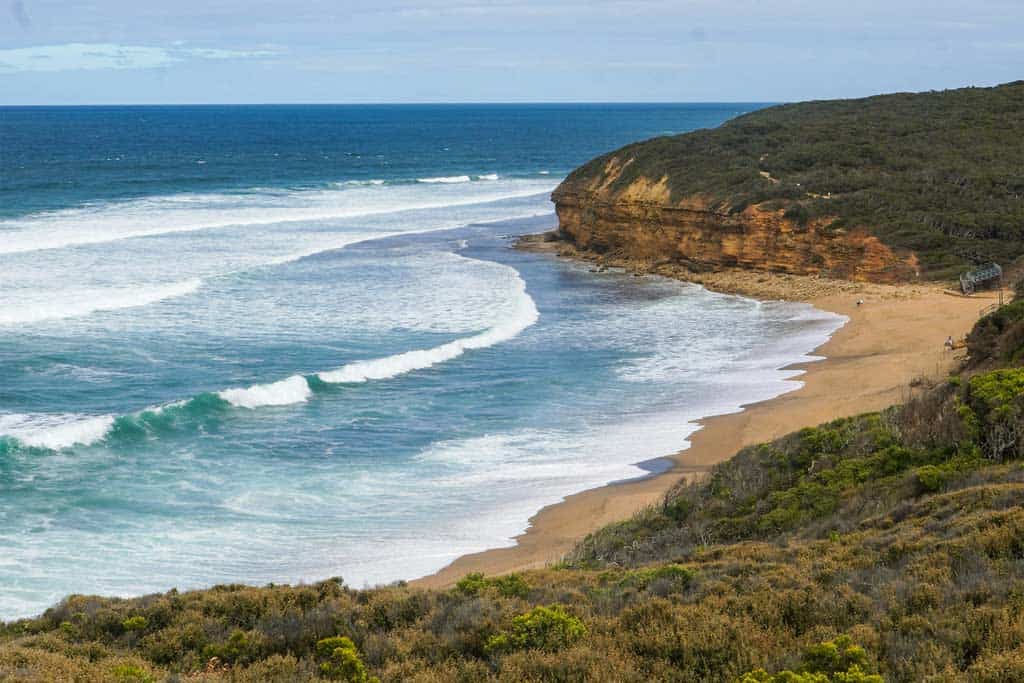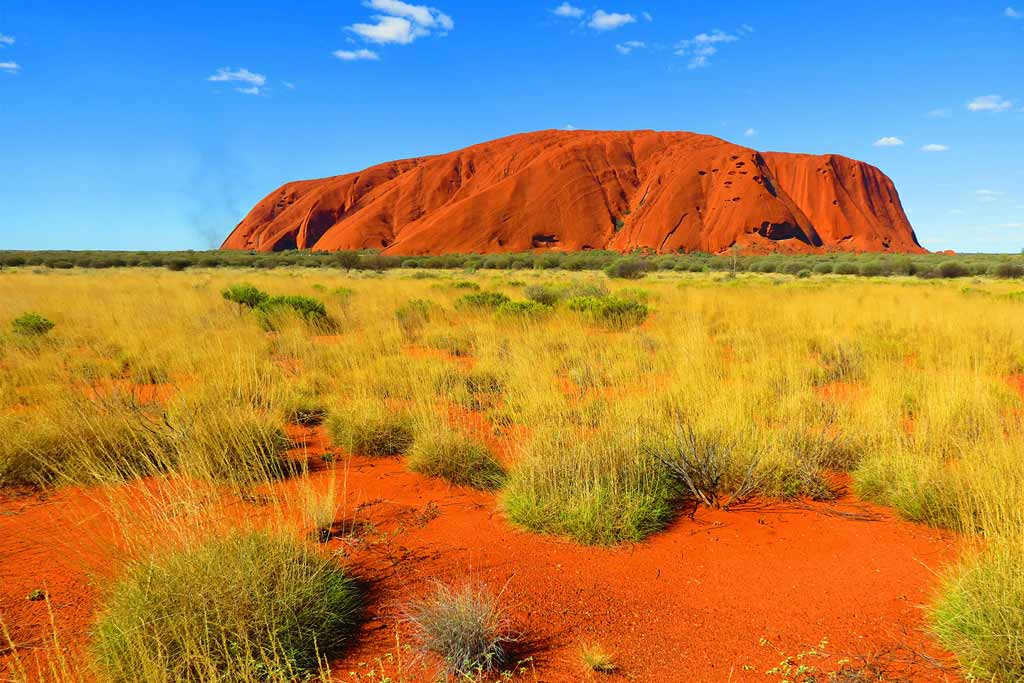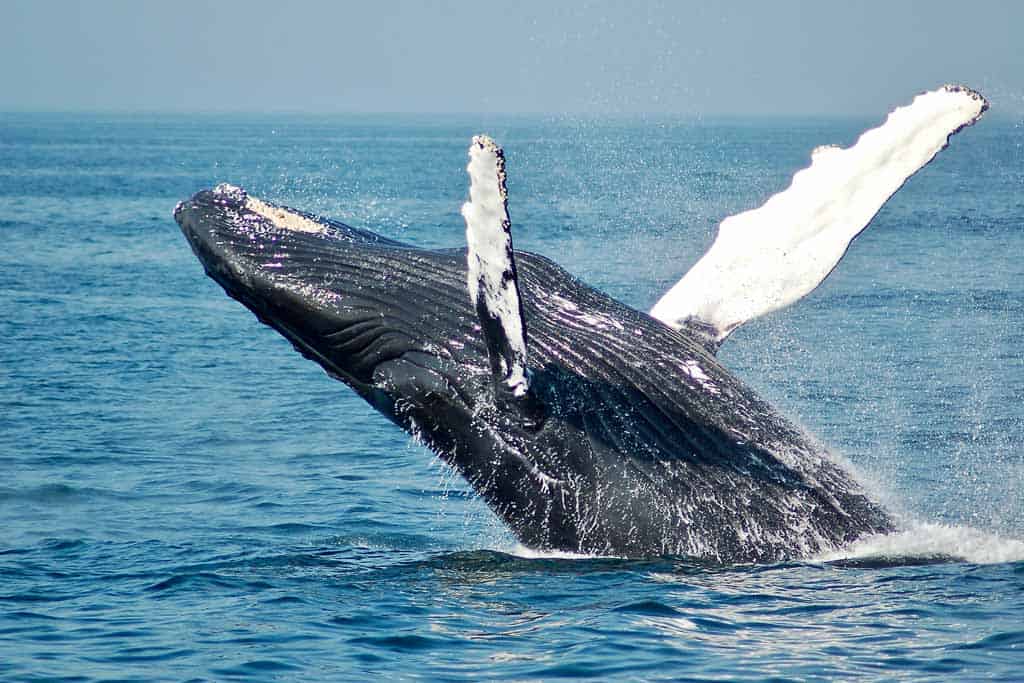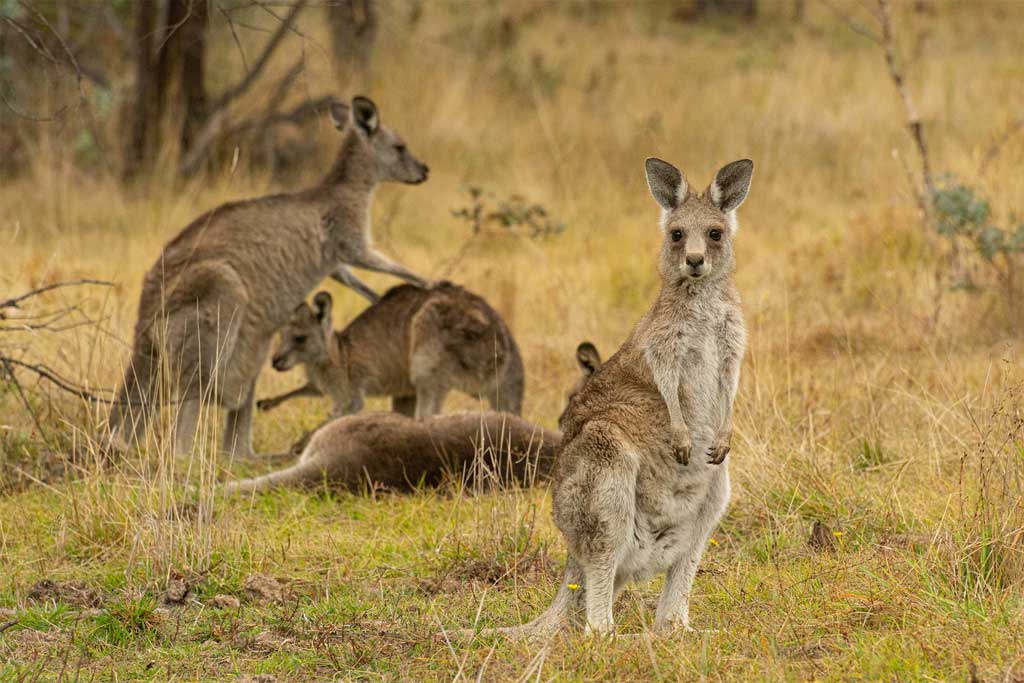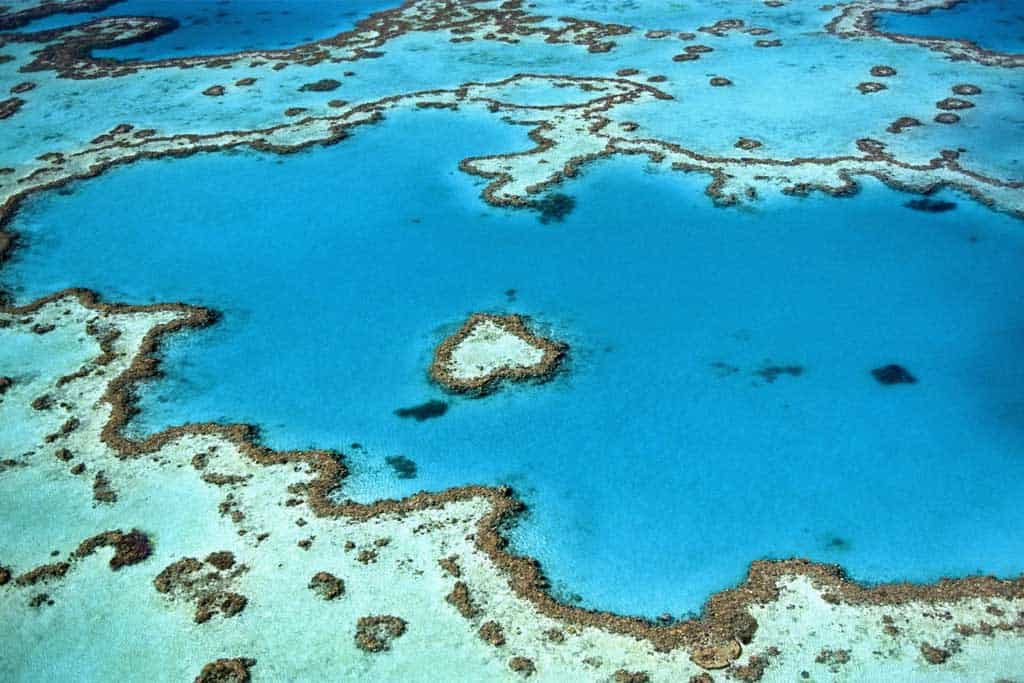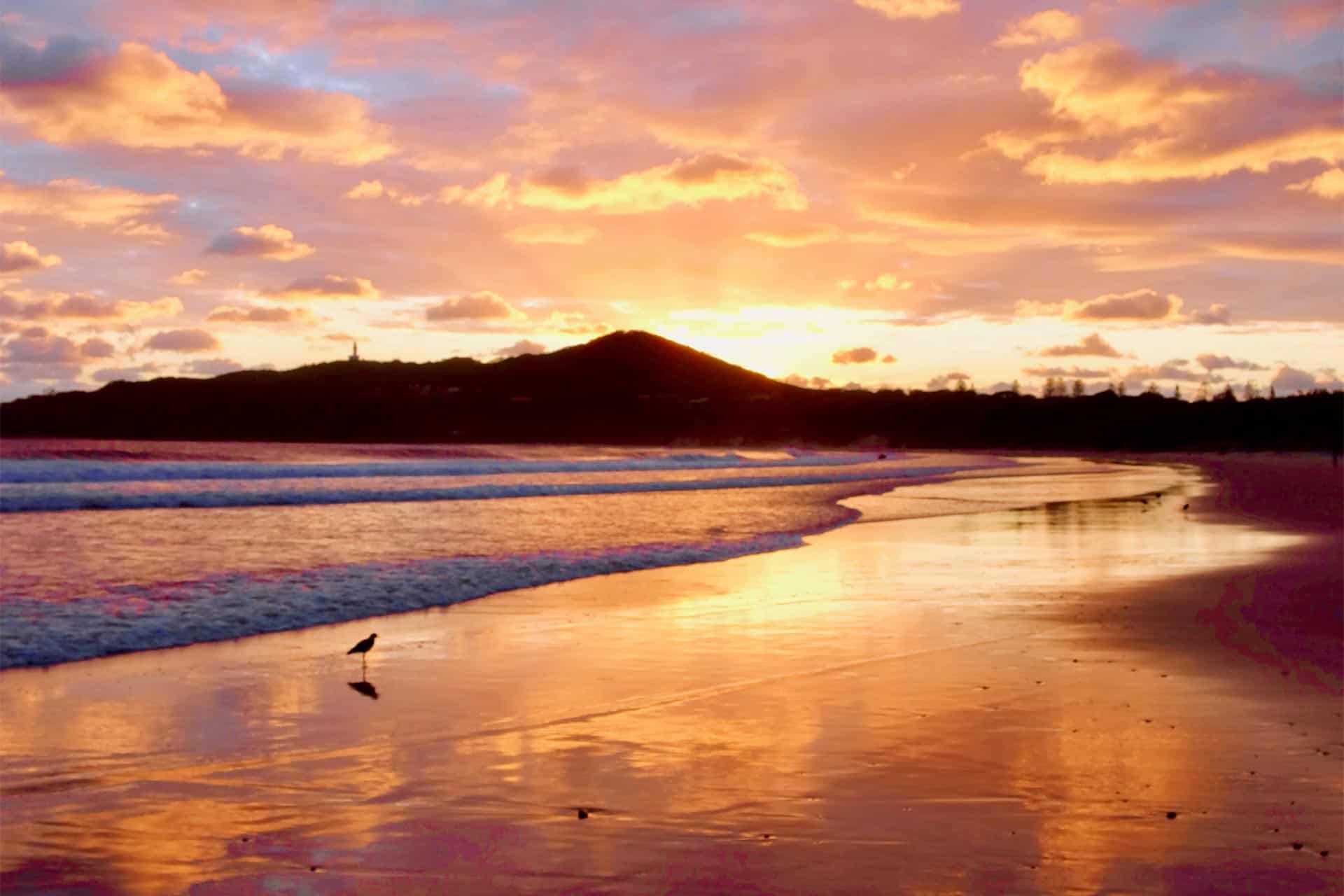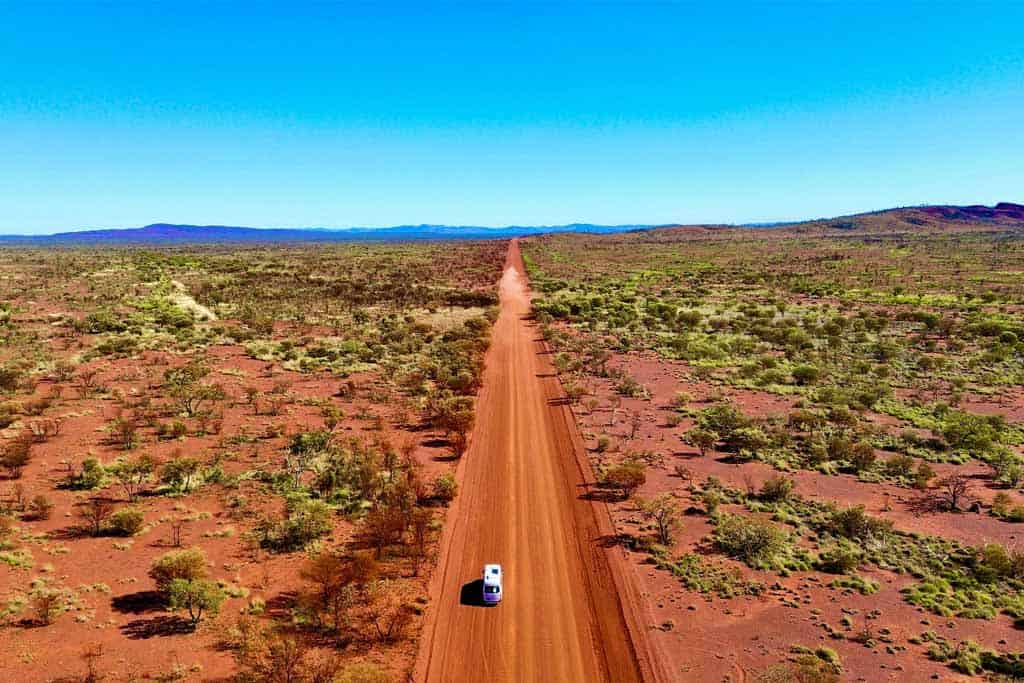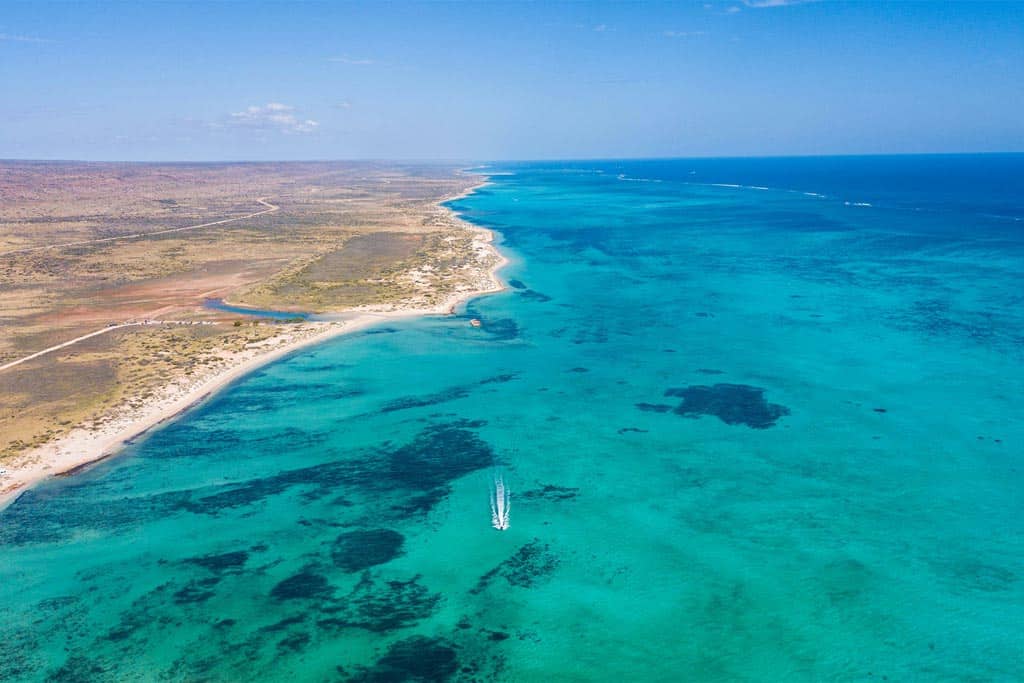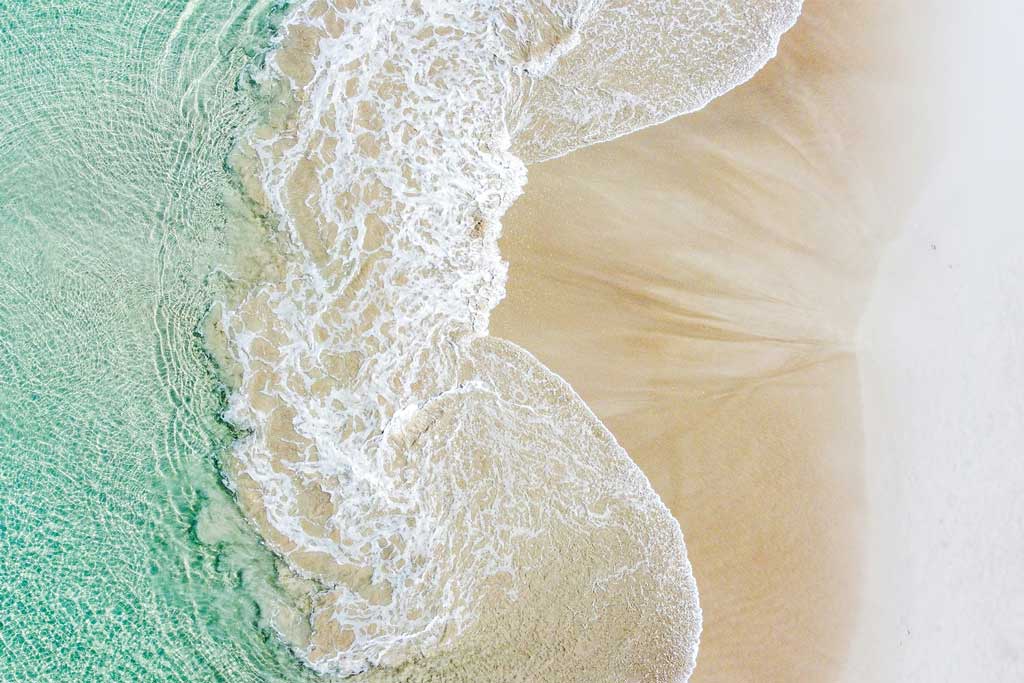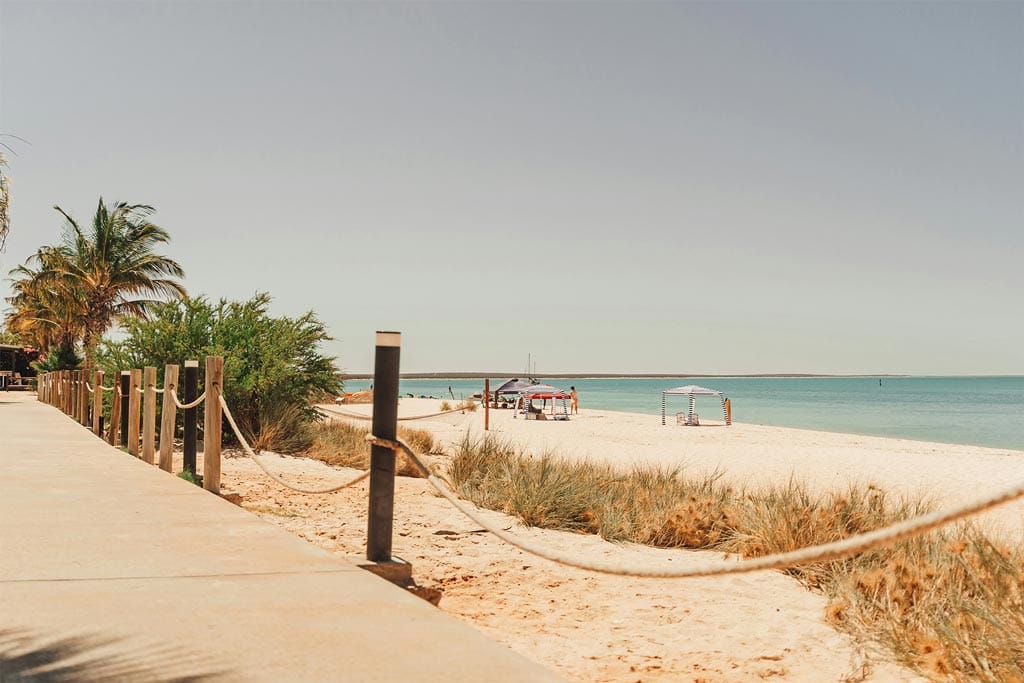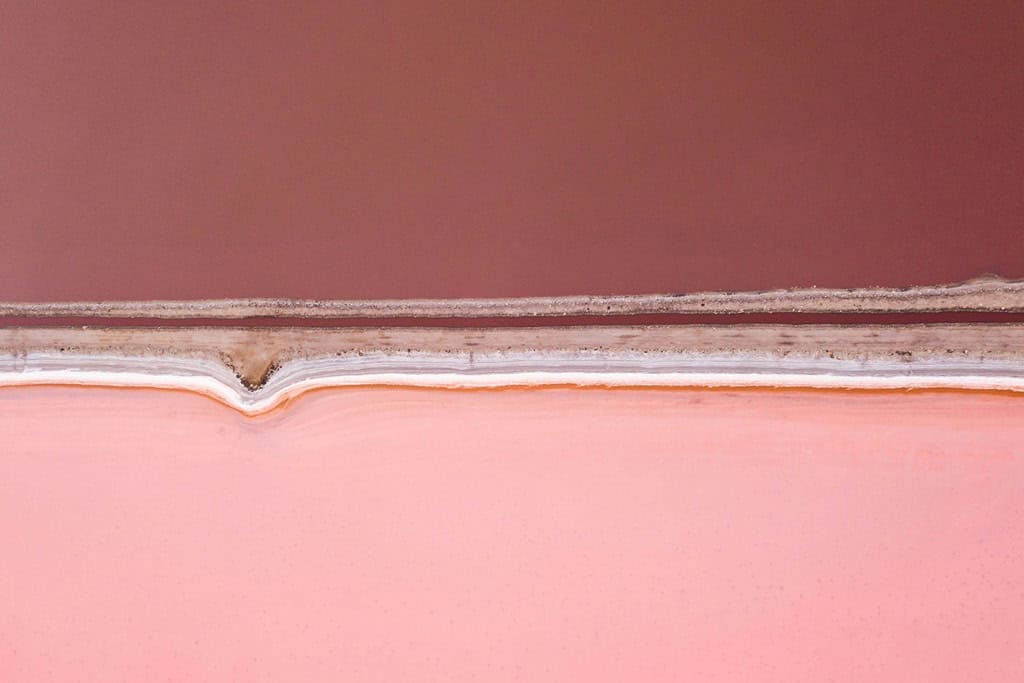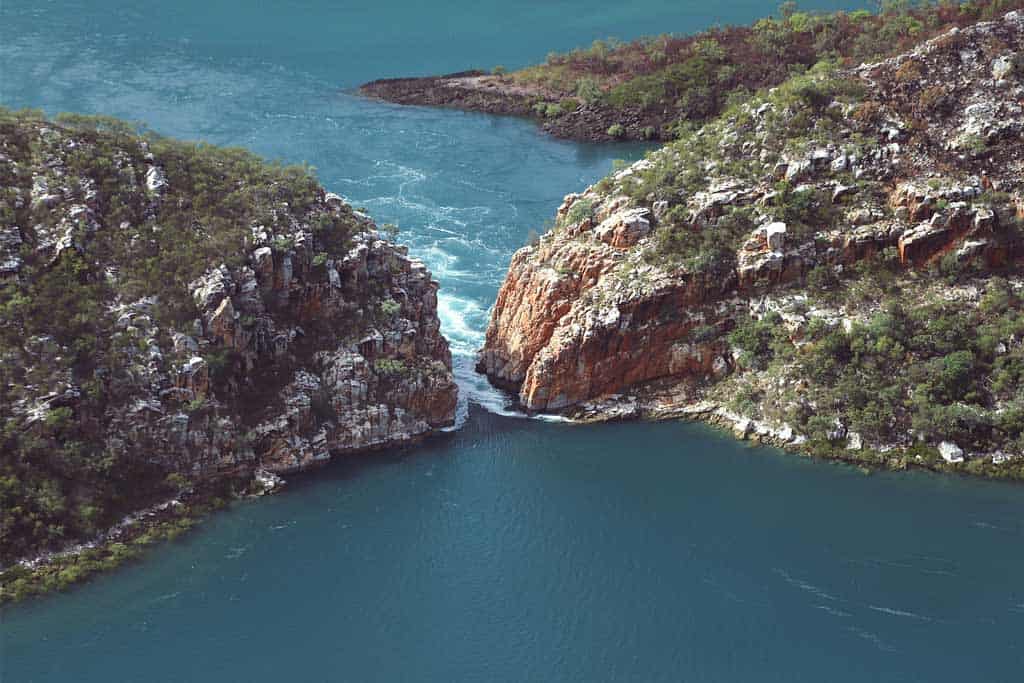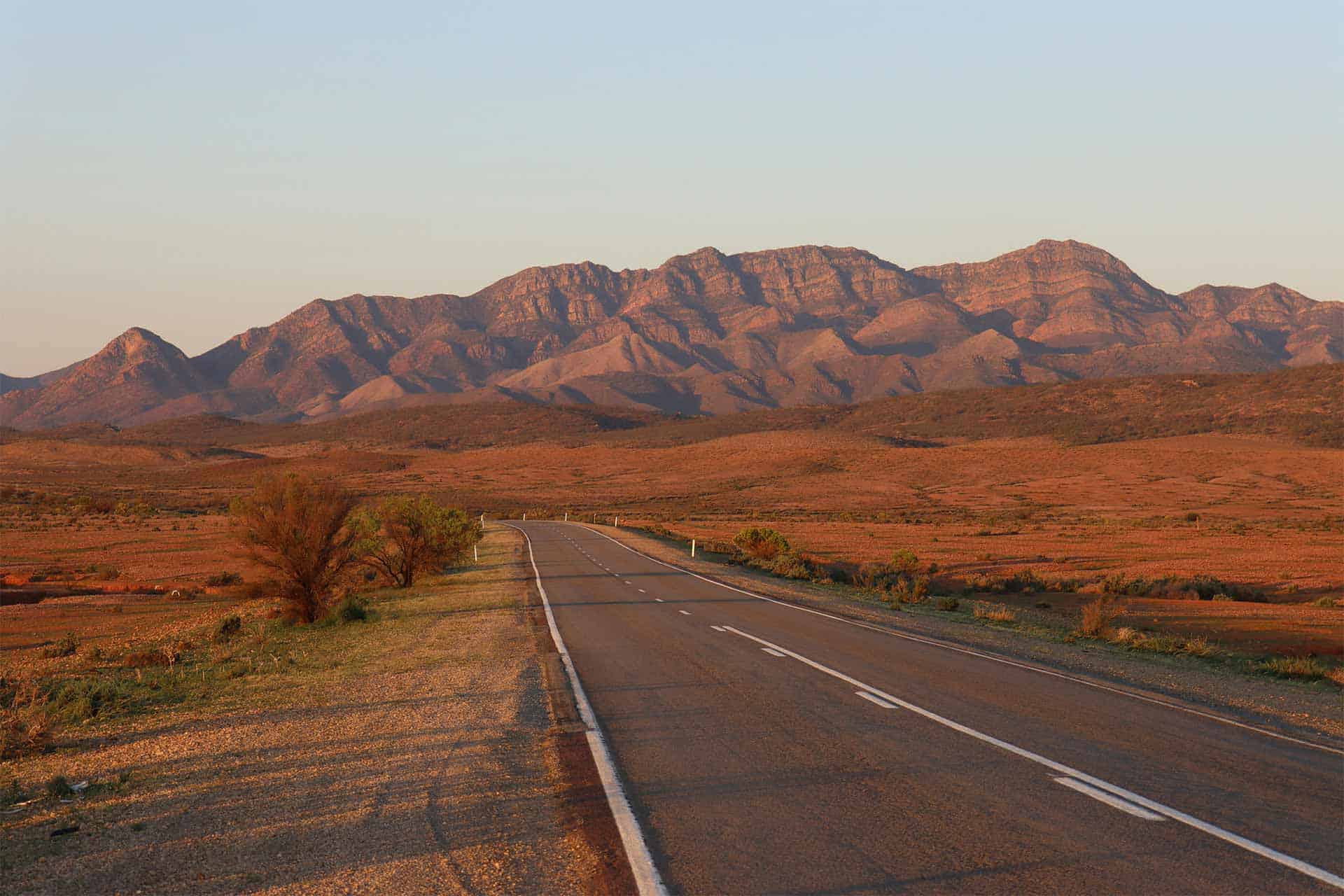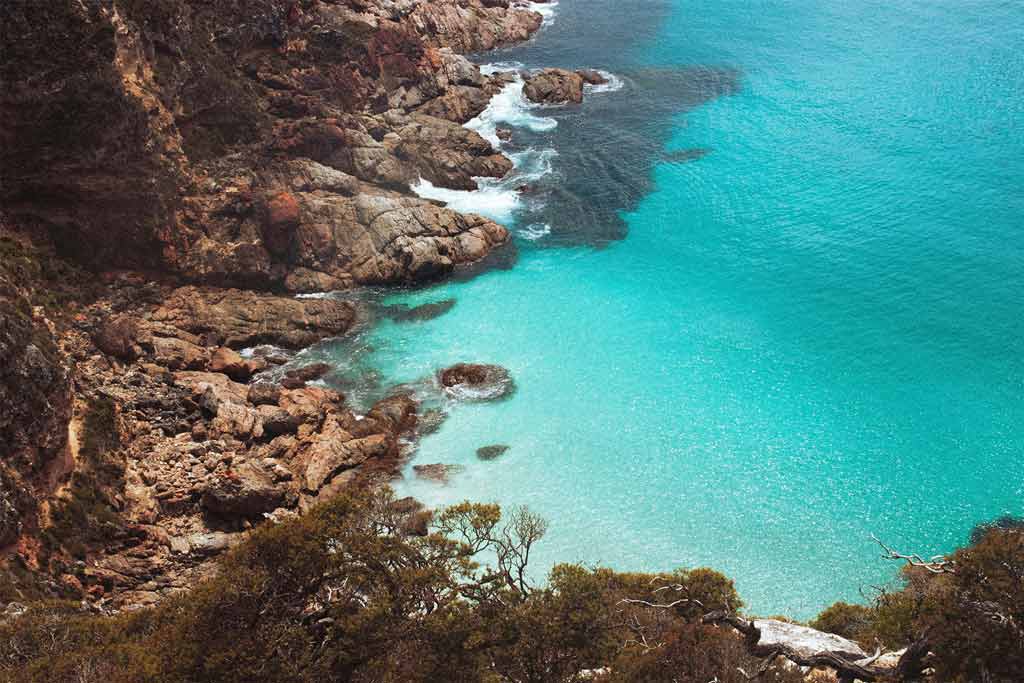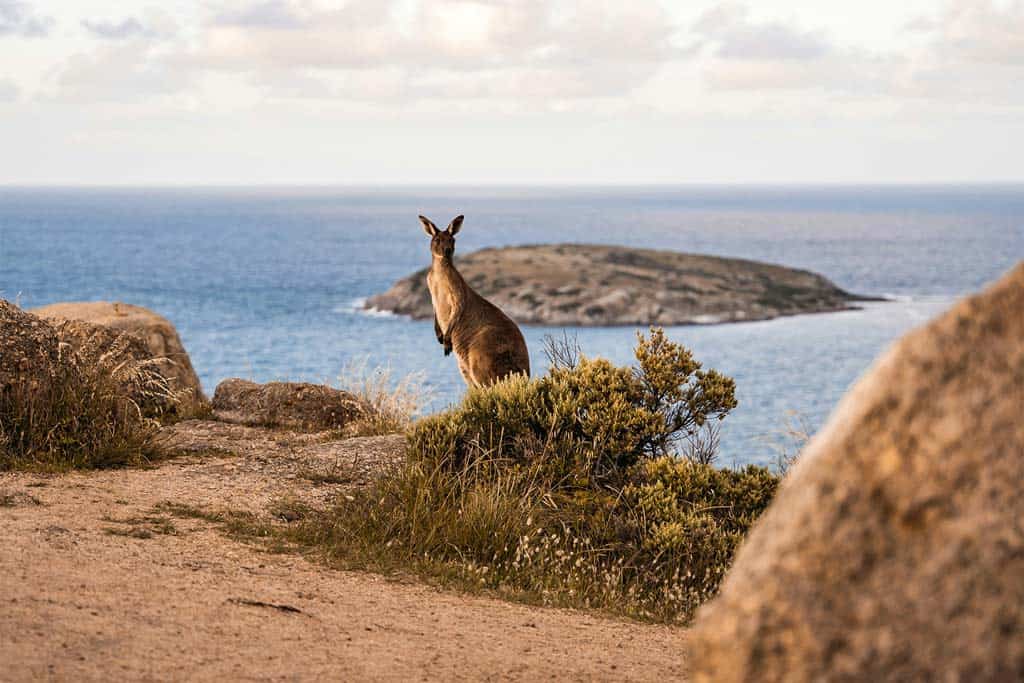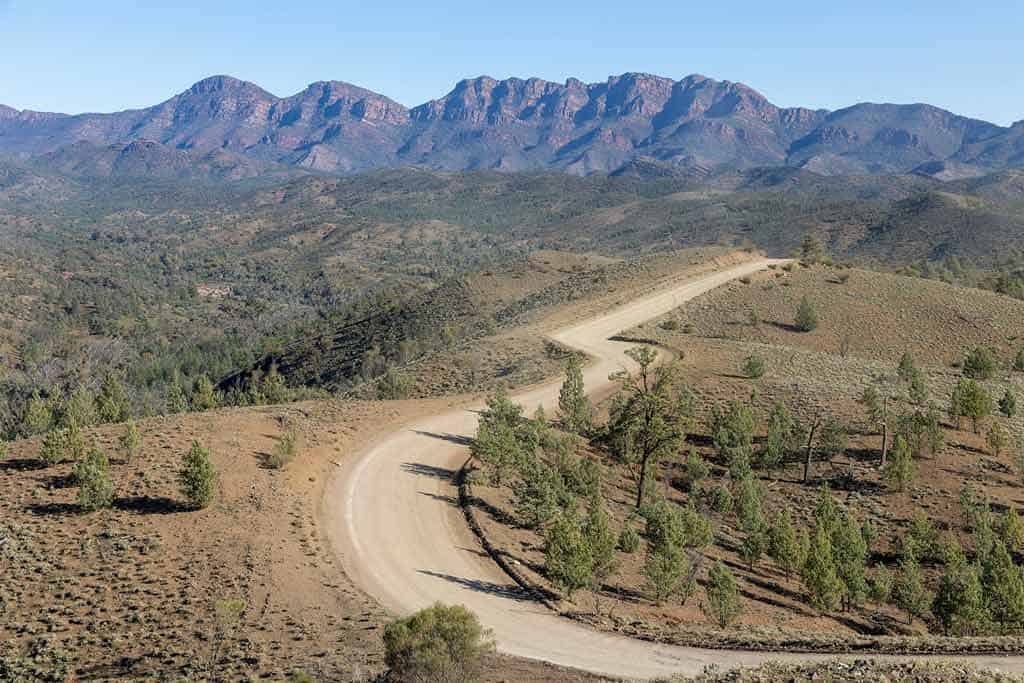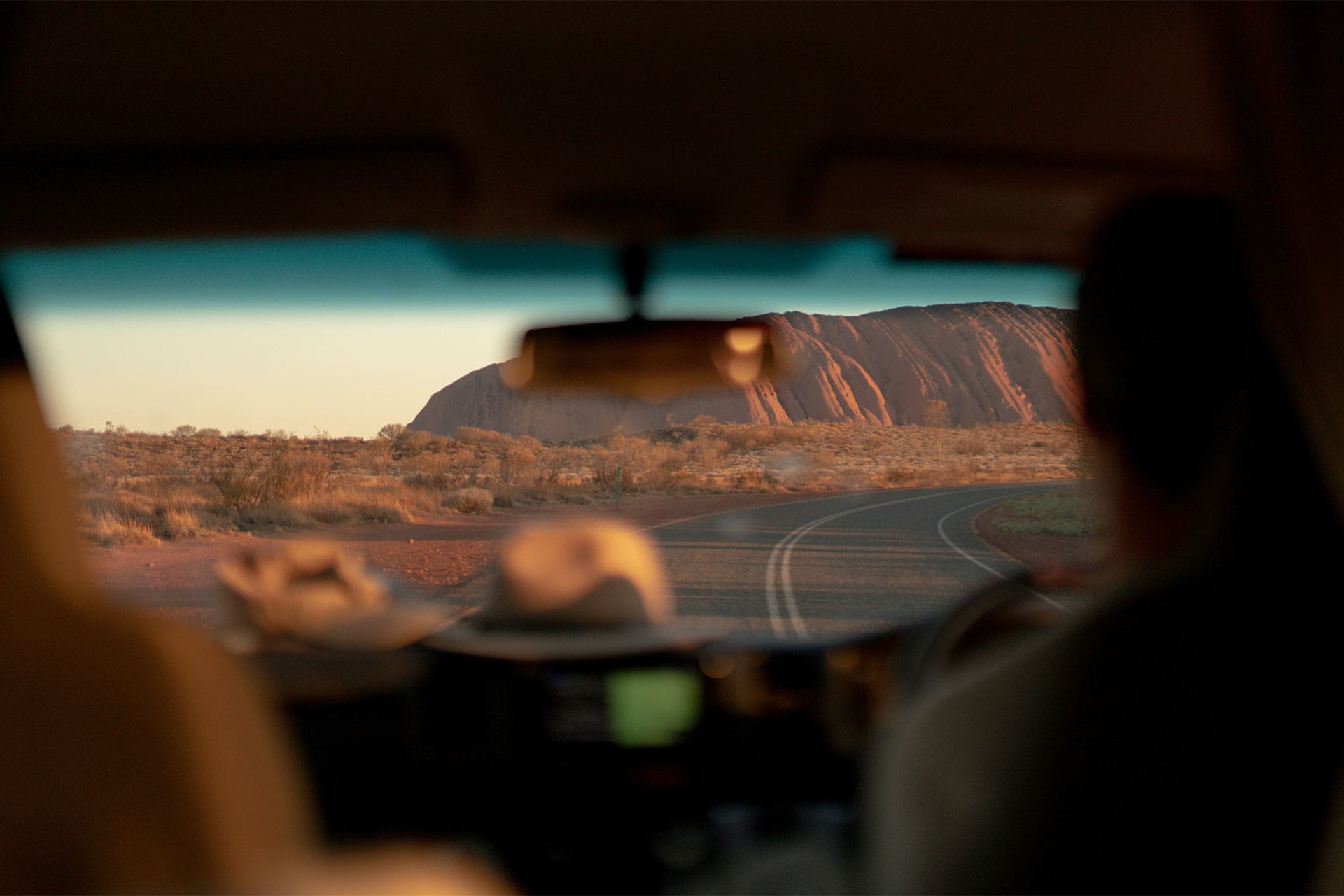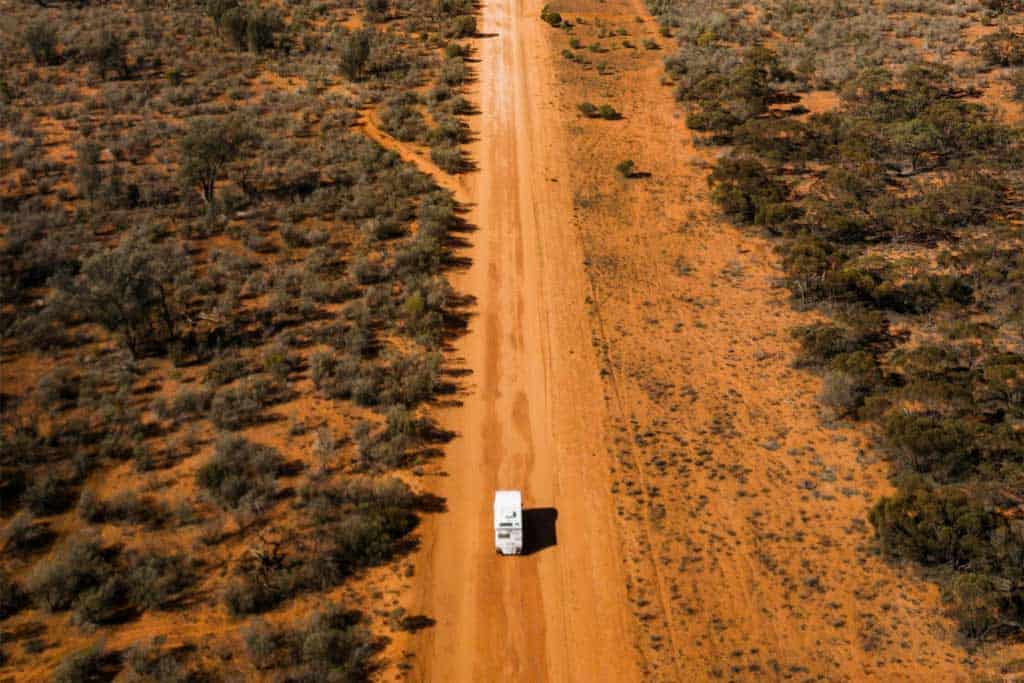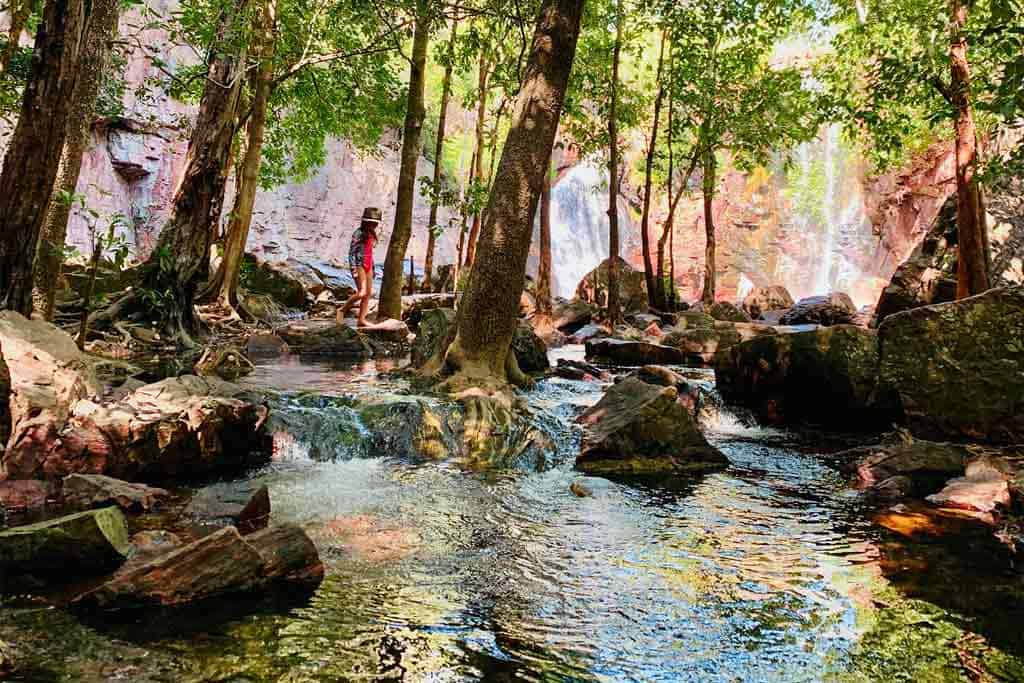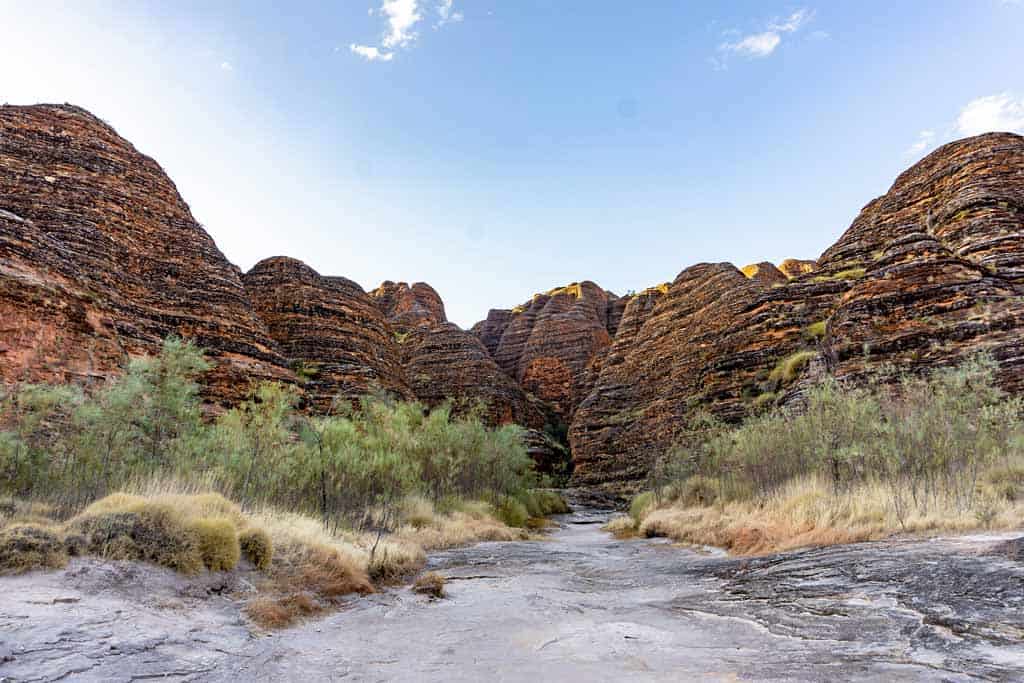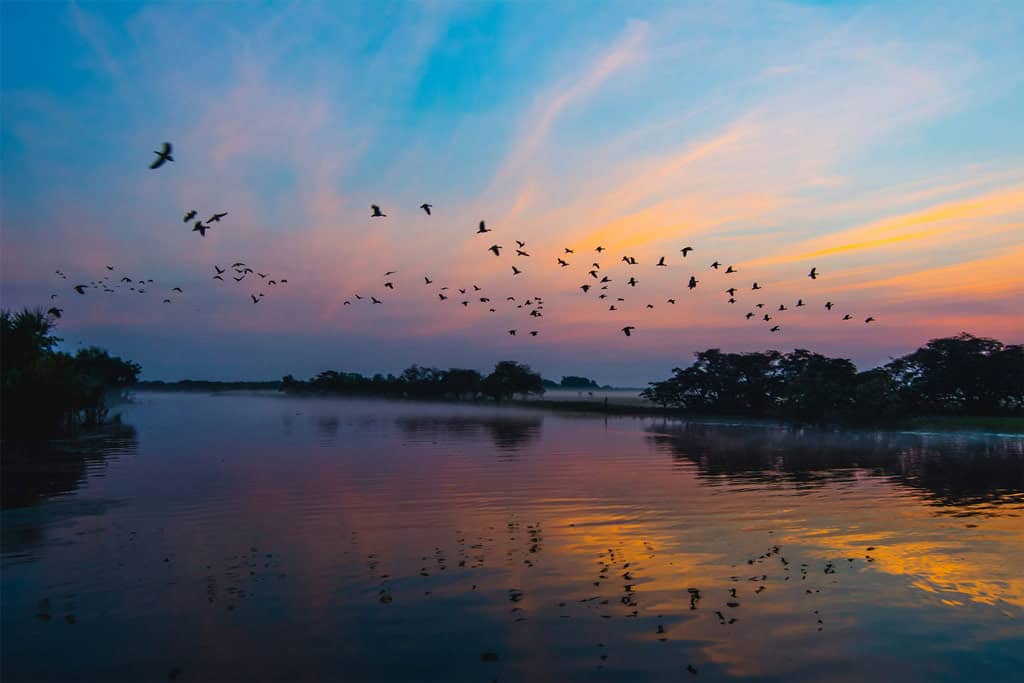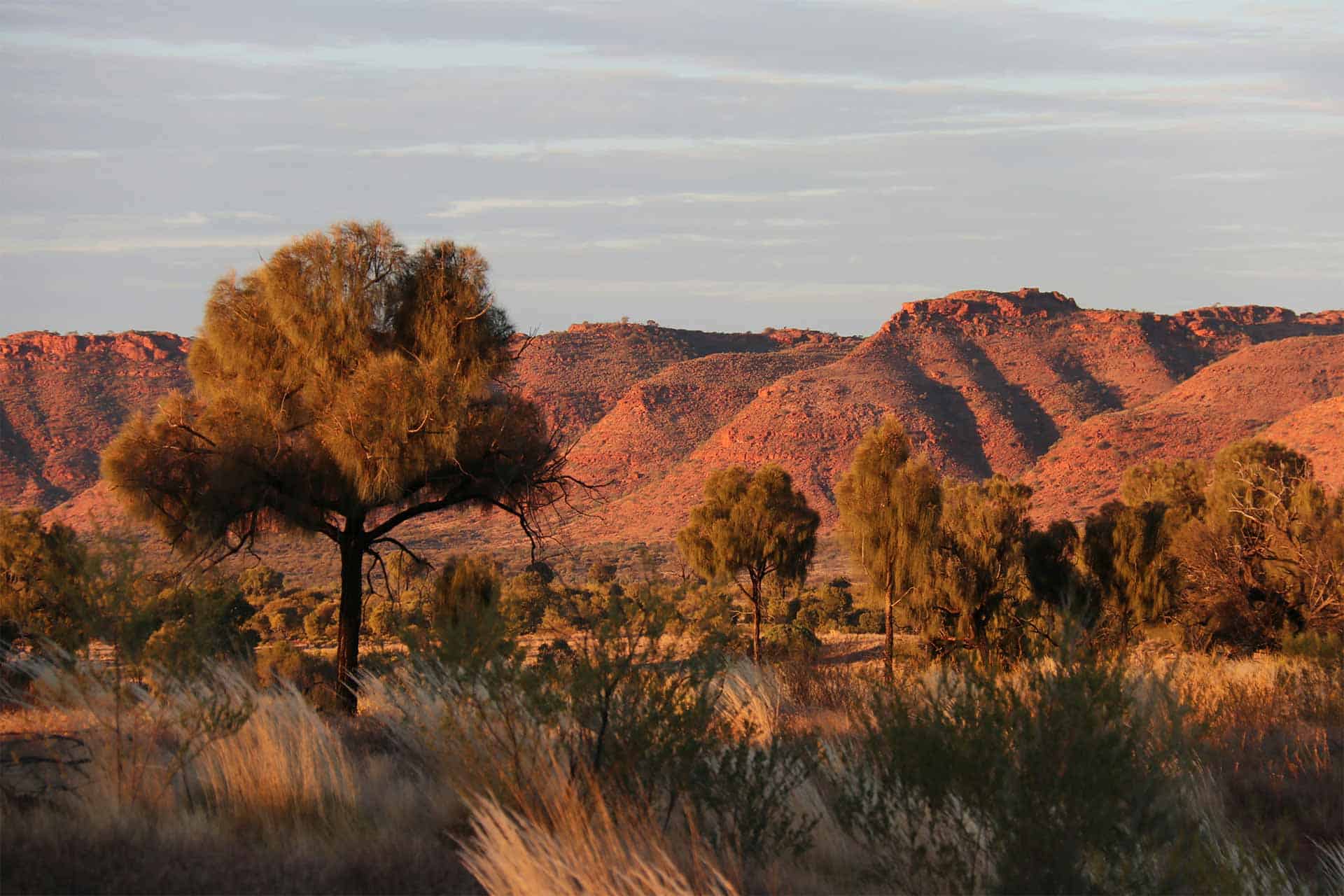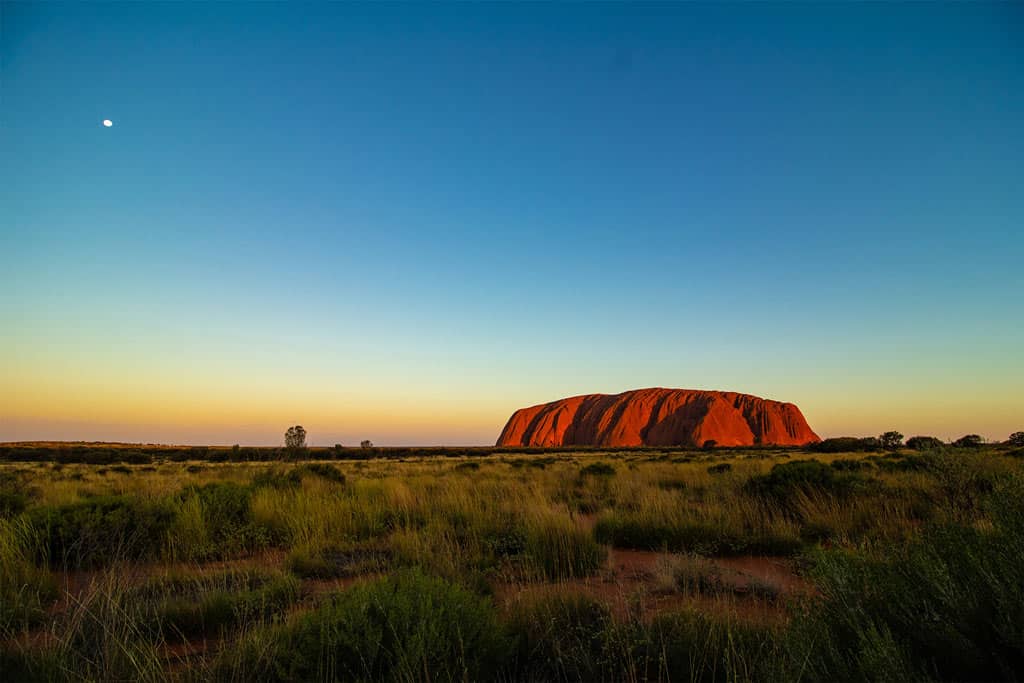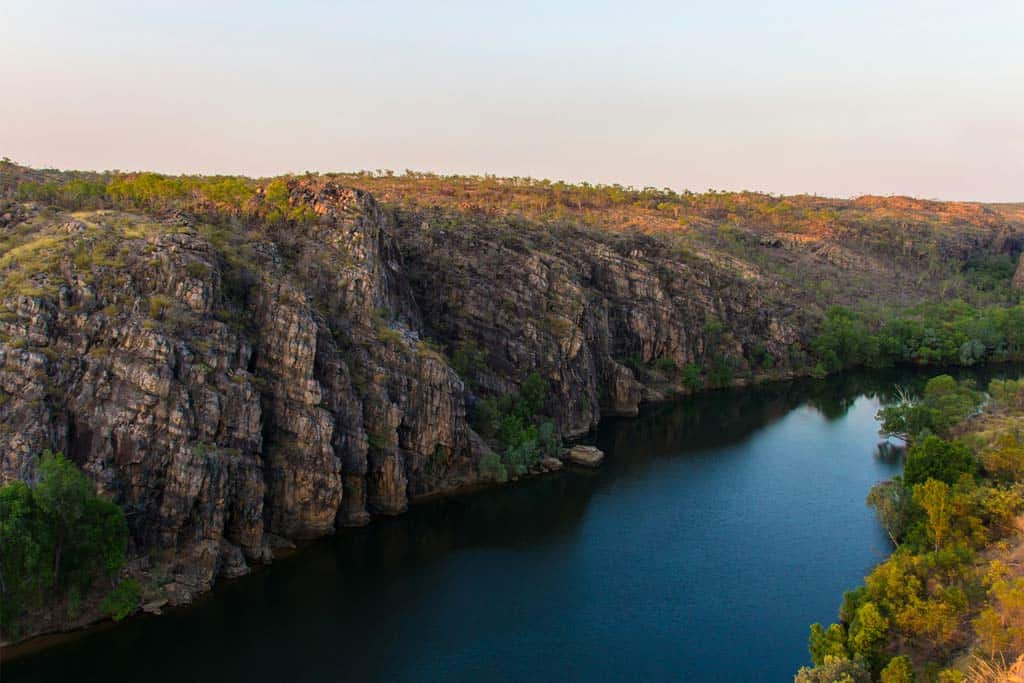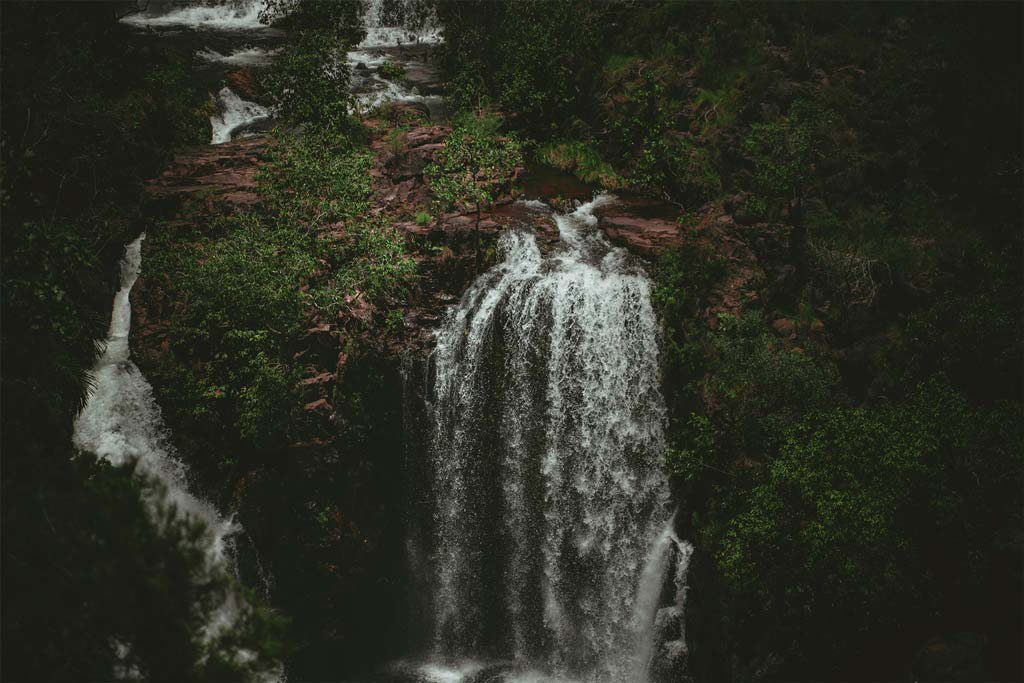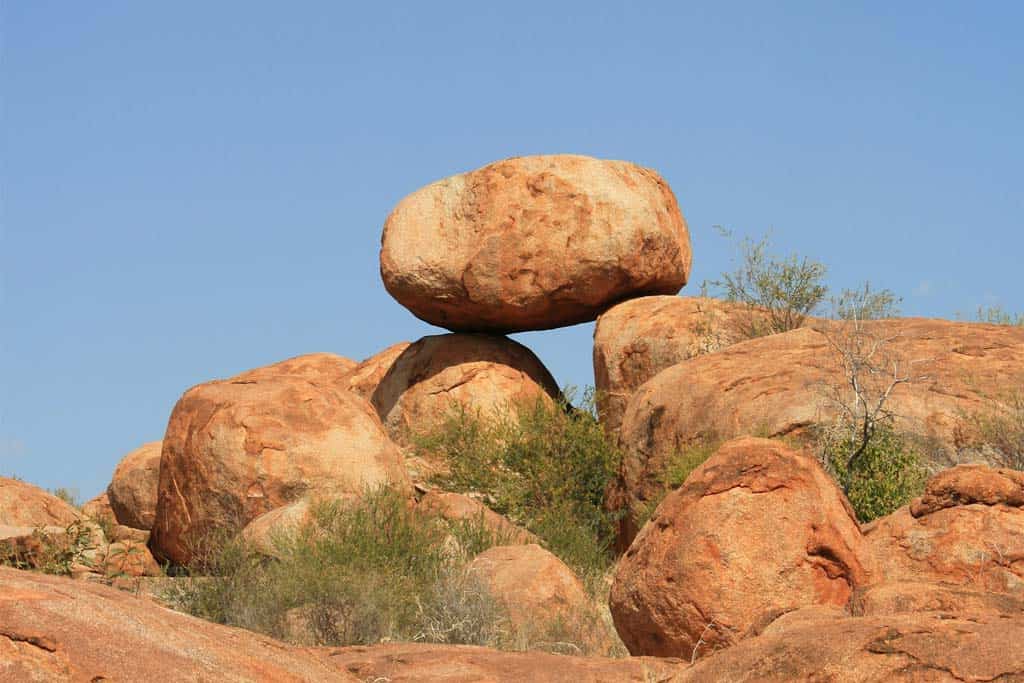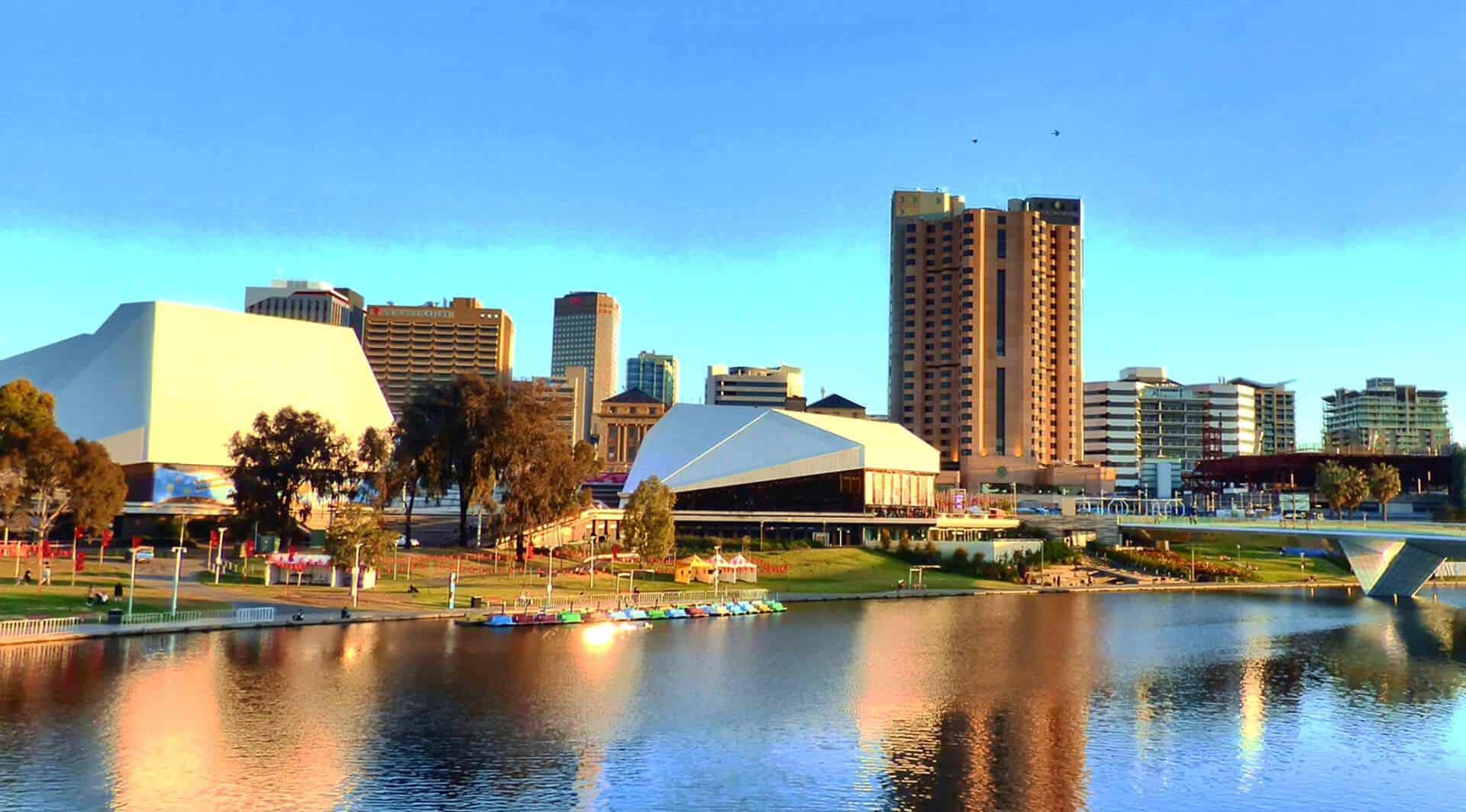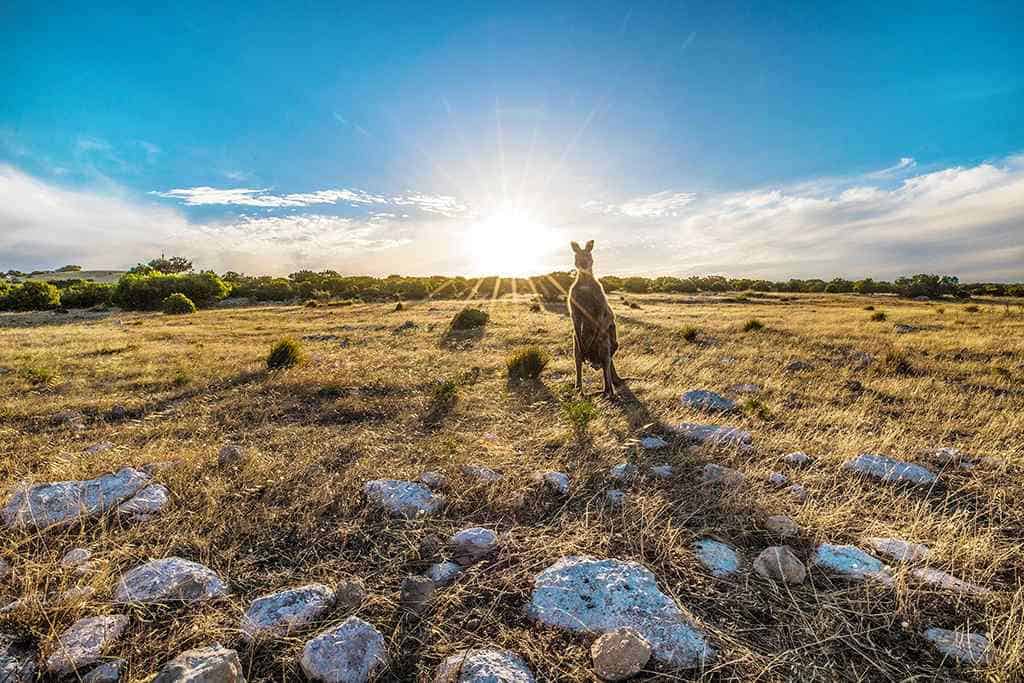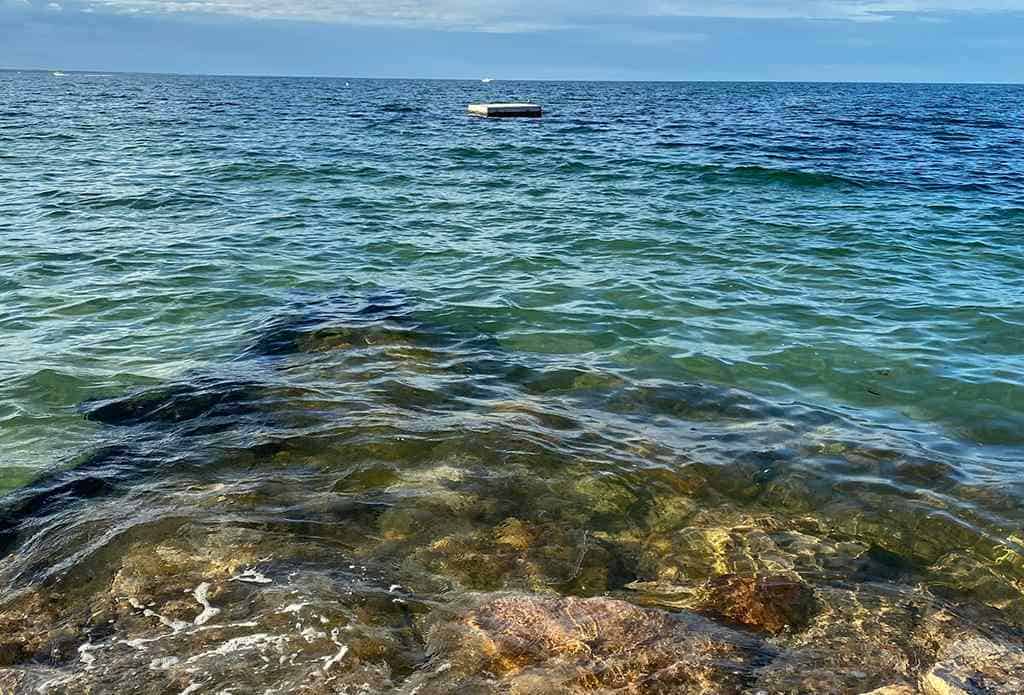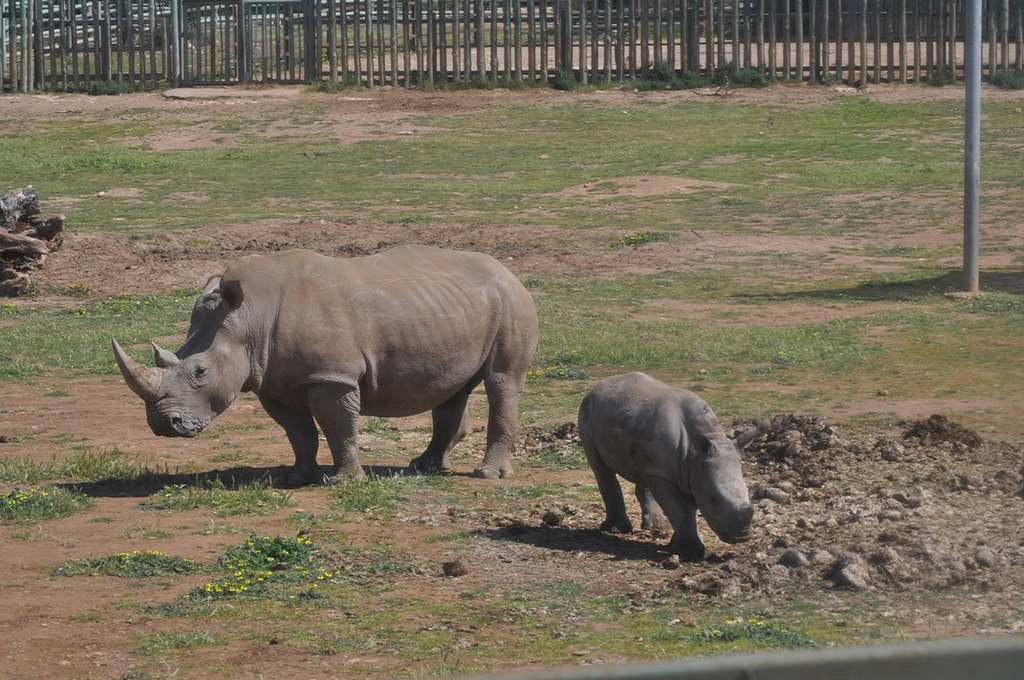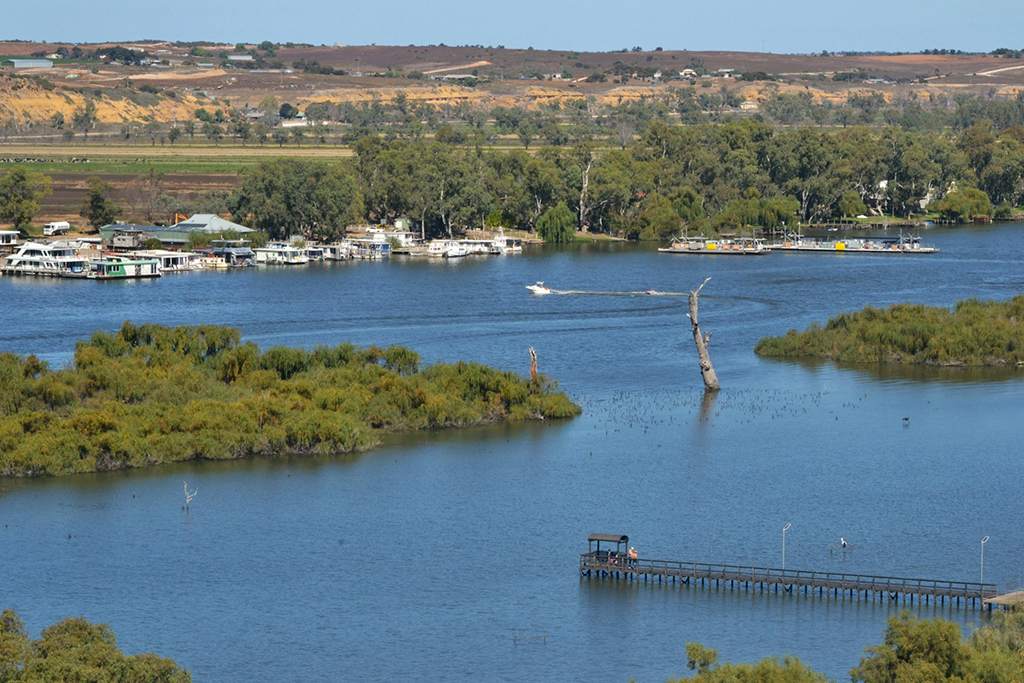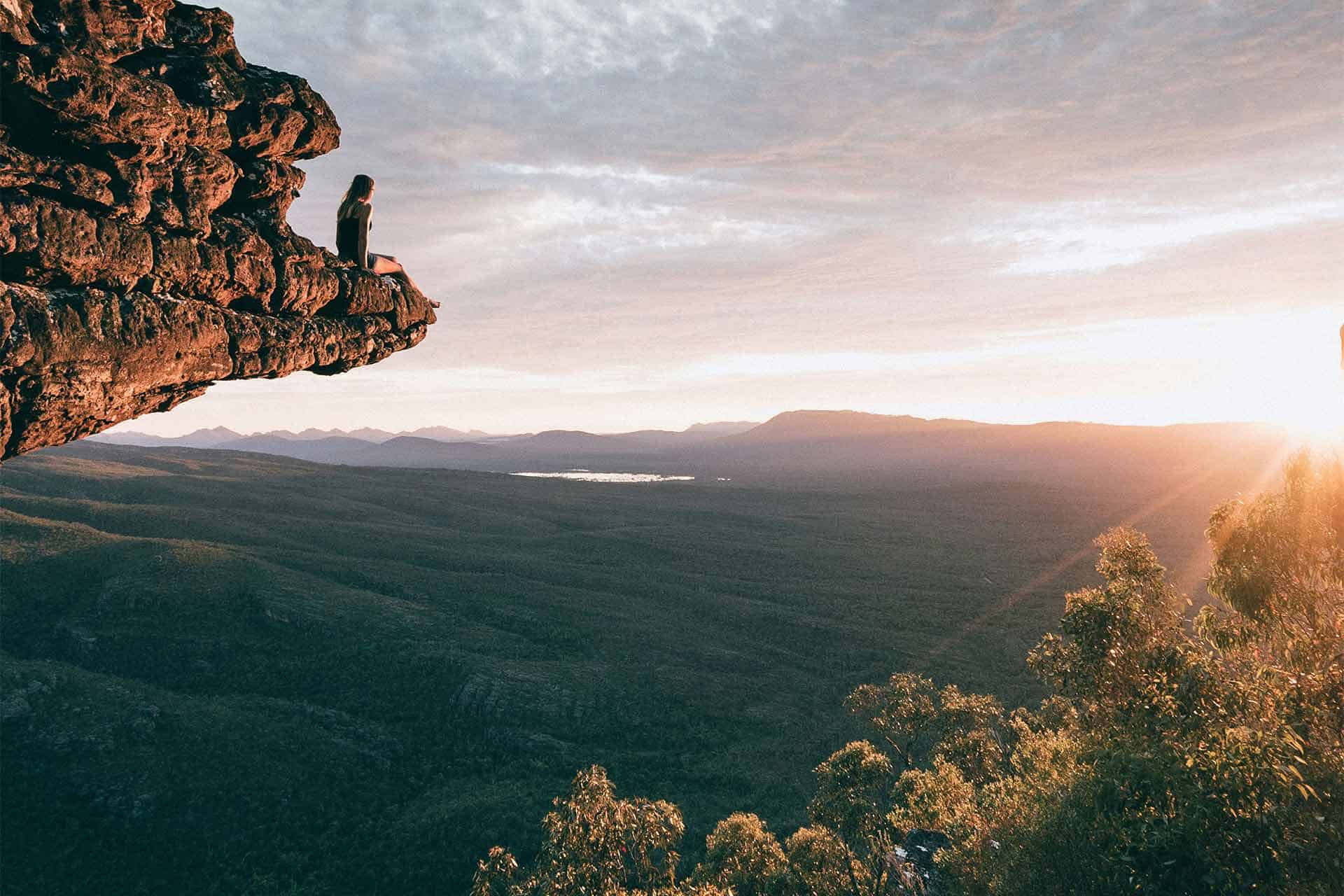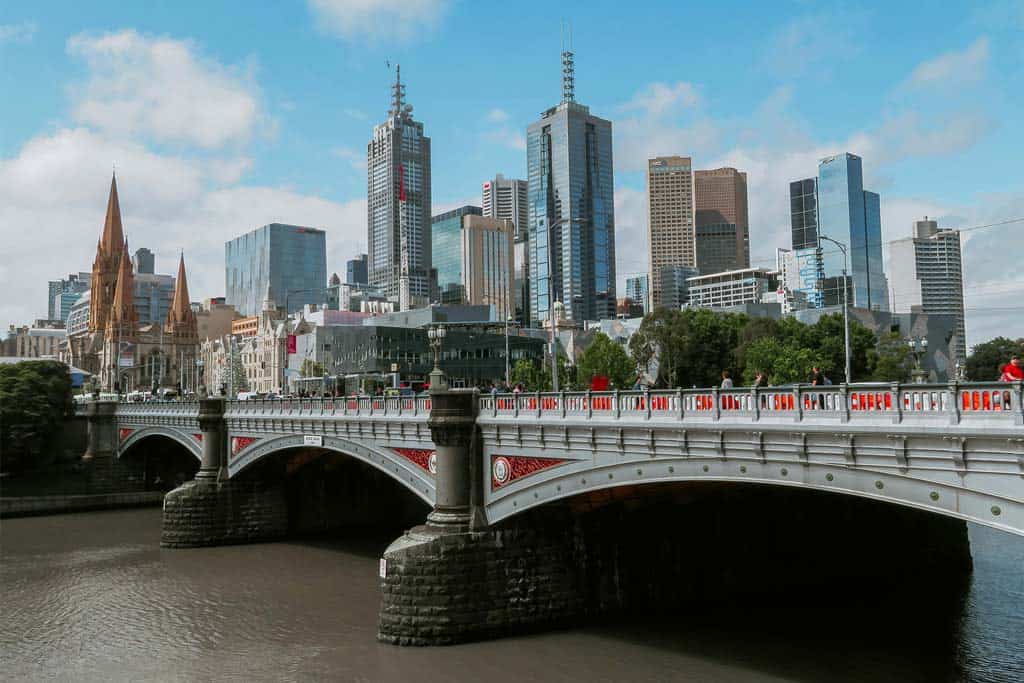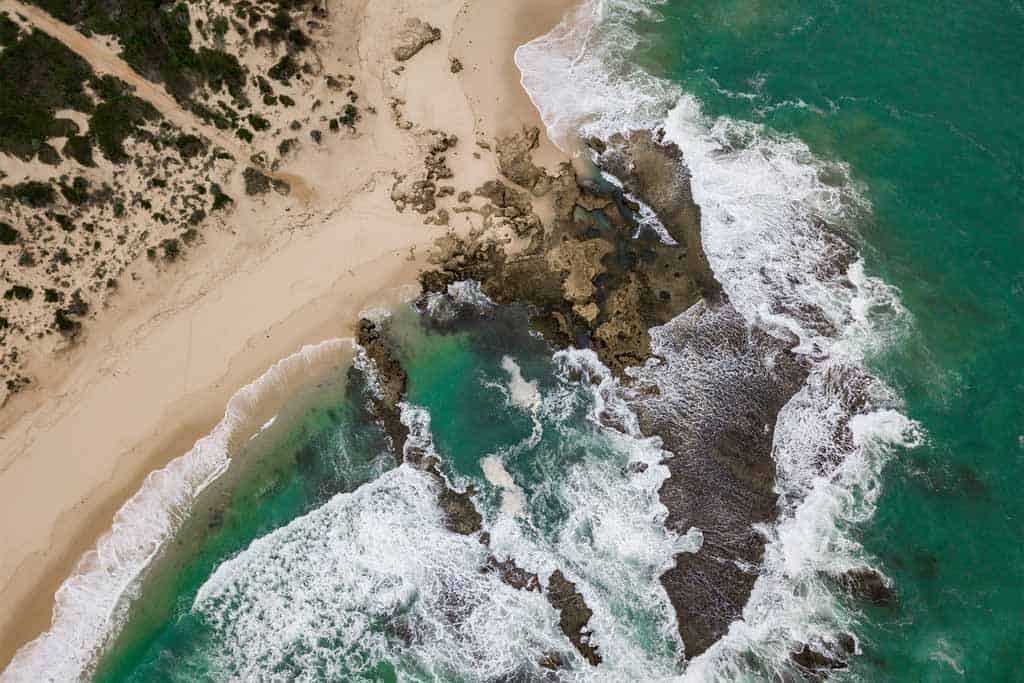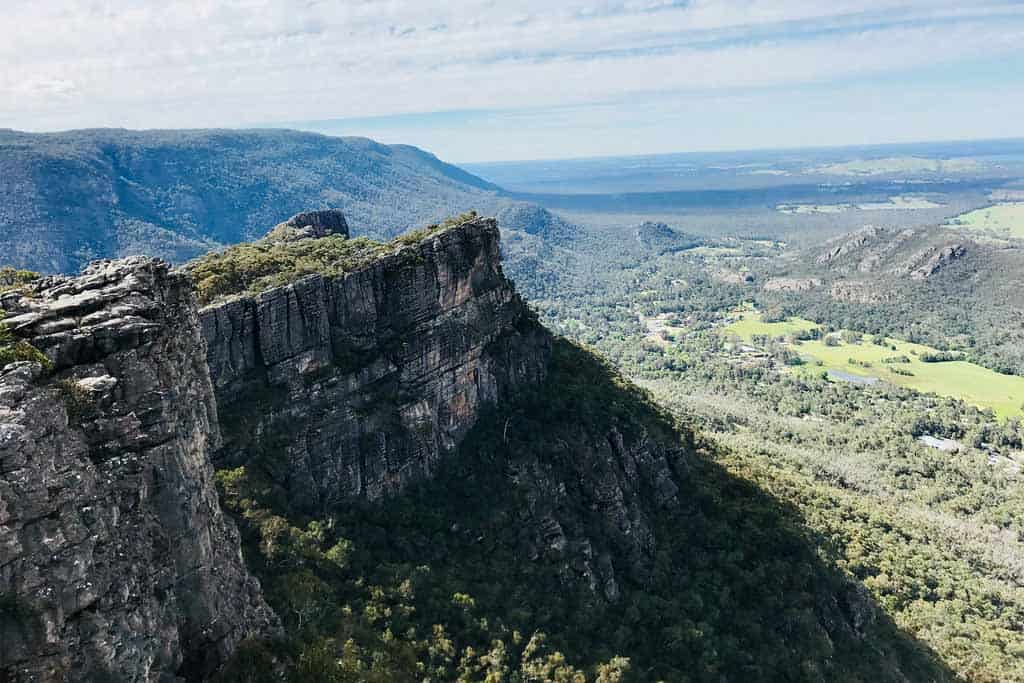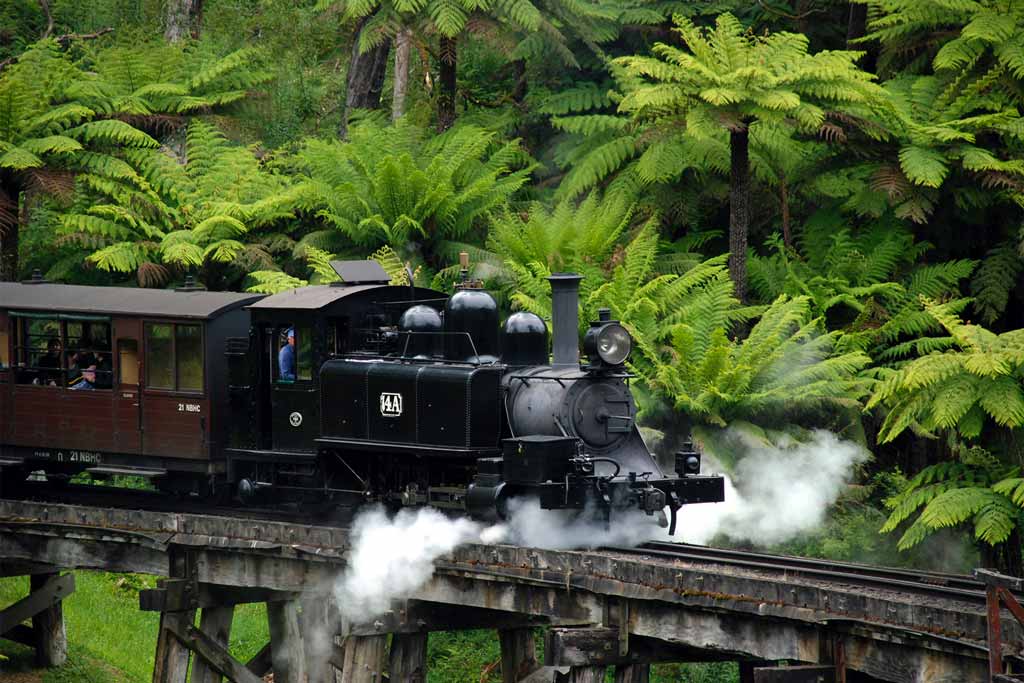From visiting Perth to touring the beautiful beaches along the coast, here is our list of the best things to do in Western Australia!
Western Australia is an incredible state full of intriguing bucket list experiences.
Compared to the East Coast, the West Coast of Australia is far less touristy. Attractions are more spread out and the terrain is much more remote, but this is part of the magic.
Western Australia has some truly mindblowing natural landscapes where you can escape the crowds and see a side of Australia that you never knew existed.
From the rich red Earth and crazy rock formations of the Dampier Peninsula and Purnululu National Park in the Kimberley, to the powdery, white sand beaches of the south west region, Western Australia has so much natural beauty to explore.
You can hike through dense karri forest, swim in a turquoise bay, or gaze out at the landscapes through a natural bridge. You can swim with whale sharks in crystal clear waters, take a selfie with a quokka, or fly over remote waterfalls on a helicopter flight.
Western Australia is packed with cool experiences. Here is our list of the best things to do!
Explore more with our ultimate Western Australia road trip itinerary!
24 Top Things To Do In Western Australia
Here are the top things to add to your Western Australia bucket list.
Whether you want to explore by car, book guided tours, hotel-hop or camp under a vast starry sky, any of these activities can be catered to your travel style.
The best way to get around is to rent a car and explore on your own! We recommend Rental Cars, which has the largest range of vehicles for the best value on the market.
1. Go wine tasting in the Margaret River Region
Just 3 hours south of Perth lies Margaret River, a destination celebrated for its world class wineries, pristine beaches, and lush forests.
This charming town and its surrounding region offer a perfect blend of natural beauty and gourmet experiences, with wine tastings and cellar door visits being the #1 attraction.
With over 200 vineyards, the Margaret River region has gained international recognition for its premium wines, particularly Cabernet Sauvignon and Chardonnay.
Few visitors come to Margaret River and skip out on a wine tasting! A guided wine adventure in Margaret River is the best way to learn about the wines and sample delicious products with the help of a local.
Margaret River also has breweries and amazing food, so there is plenty to do if you’re not a wine lover. Join a wine and brewery tour or visit beloved local establishments like the Margaret River Dairy Company or the Margaret River Chocolate Company.
2. Check out the Bungle Bungles in Purnululu National Park
Purnululu National Park, located in Western Australia’s remote East Kimberley region, is a UNESCO World Heritage site with crazy geological formations and rich cultural heritage.
The park’s centerpiece is the Bungle Bungle Range, a series of giant, rounded sandstone domes formed over 20 million years through natural erosion.
Beyond the Bungle Bungles, Purnululu National Park is home to diverse ecosystems, including deep gorges, palm-filled oases, and open plains.
Purnululu National Park also holds significant Aboriginal cultural sites and has some amazing hikes to places like Cathedral Gorge and Echidna Chasm.
3. Ride a camel at sunset on Cable Beach
Cable Beach is a highlight of Broome. This sleepy little beach town in north of Western Australia is the Gateway to the Kimberley region.
But before you set off on any adventures, make sure you visit Cable Beach!
Set along the turquoise waters of the Indian Ocean, this stunning beach has 22 kilometers of soft white sand and is amazing for strolling, swimming, sunbathing, and relaxing.
The best way to experience Cable Beach is with a sunset camel ride, where you can witness a mesmerising Western Australia sunset in style.
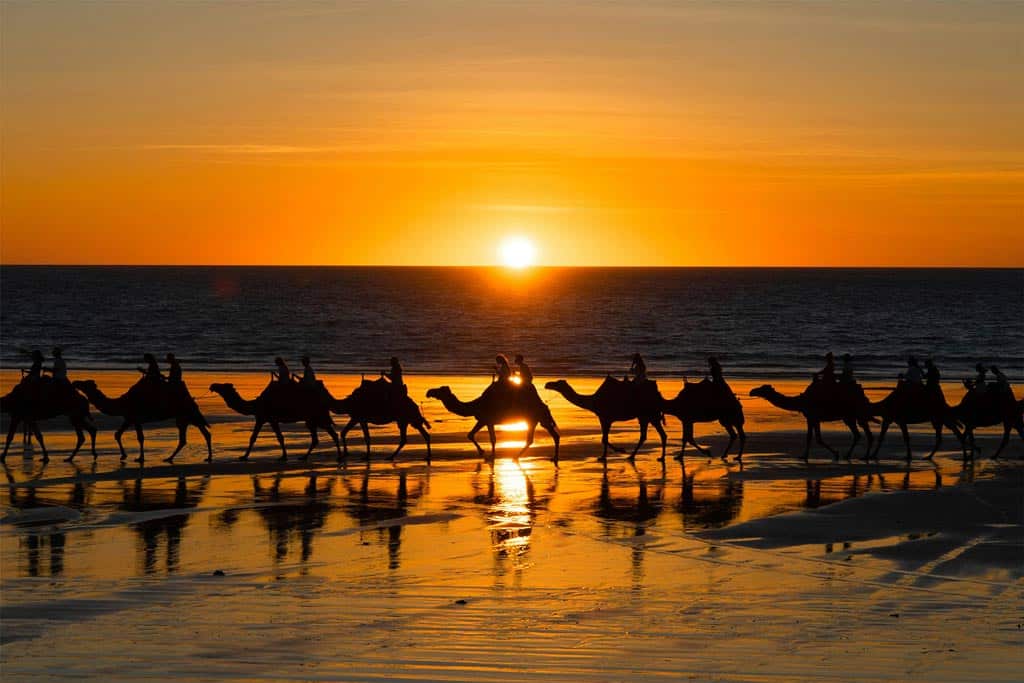
4. Go stargazing in the Pinnacles Desert
Another one of the coolest natural attractions to see in Western Australia is the Pinnacles Desert.
The Pinnacles, located within Nambung National Park approximately 200 kilometers north of Perth, are a fascinating sight.
These thousands of limestone pillars, some reaching up to 5 meters in height, rise dramatically from the golden sands, creating a surreal and otherworldly landscape.
Formed over 25,000 to 30,000 years ago, the Pinnacles originated from seashell deposits left behind when the sea receded; over time, coastal winds eroded the surrounding sand, revealing the striking formations.
The Pinnacles Desert is an easy day trip from Perth! Join a sunset and stargazing tour to make the most of your visit.
5. Explore Karijini National Park
Karijini National Park, situated in the heart of Western Australia’s Pilbara region, is a breathtaking expanse of natural beauty.
It is the state’s second-largest national park, so you could easily spend multiple days uncovering all the beauty of Karijini National Park. The area is filled with dramatic gorges, cascading waterfalls, and tranquil swimming holes nestled within red rock canyons that plunge up to 100 meters deep.
The park’s diverse landscapes are best explored on foot, with hiking trails leading to iconic sites like Dales Gorge, Fortescue Falls, and Fern Pool.
Karijini National Park is also rich in Aboriginal heritage, being the traditional land of the Banyjima, Kurrama, and Innawonga peoples, whose connection to the land spans over 20,000 years.
Don’t miss swimming, hiking, camping, and exploring in Karijini National Park, as this is one of the best things to do in Western Australia!

6. Road trip along the South West Coast to Esperance
The south west corner of Australia is truly spectacular.
Head south of Perth along the coast and stop in beautiful places like Busselton, Margaret River, Dunsborough, and Augusta. In these spots you can surf, explore magnificent caves, go wine tasting, or stroll along the coastline.
As you continue on your scenic drive of the south west coast, you’ll get to see some of the best beaches Western Australia.
Meelup Beach, Hamelin Bay, Greens Pool, Elephant Rocks, Little Beach, Twilight Beach, Lucky Bay, and Hellfire Bay are all beautiful beaches with powdery white sand and crystal clear waters.
As you road trip along the south west coast towards Esperance, you can stop at any of these gorgeous spots and bask in the unbelievable coastal beauty.
Organise your trip with our Perth to Esperance road trip itinerary!
7. Swim with whale sharks
Hands down, one of the best things to do in Western Australia is swim with whale sharks in Ningaloo Reef.
Ningaloo Reef Marine Park is a UNESCO World Heritage Site that spans the coastline around Exmouth and Coral Bay. This section of the Coral Coast has a magnificent display of marine life, including whale sharks between March and July.
At this time of year, guided tours let snorkellers have respectful, close encounters with whale sharks. You can observe these majestic creatures in their natural habitat while also spotting manta rays, turtles, and vibrant coral reef life.
Swimming with whale sharks at Ningaloo Reef is one of Australia’s most awe-inspiring wildlife experiences.
8. See kangaroos on the beach in Lucky Bay
Lucky Bay is a stunning location in Cape Le Grand National Park near Esperance, Western Australia.
The beach itself is a marvel, with pristine white sands and turquoise waters. But the best thing to do at this gem of Australia’s south west? See kangaroos on the beach!
These wild marsupials are often seen lounging on the beach, especially during the cooler parts of the day when they emerge from the surrounding bushland to graze and bask in the sun.
The combination of stunning coastal scenery and the chance to observe kangaroos in their natural habitat makes Lucky Bay a must-visit destination.
But just remember, kangaroos are wild animals! Sightings are not guaranteed, and you should only admire the animals from a distance.
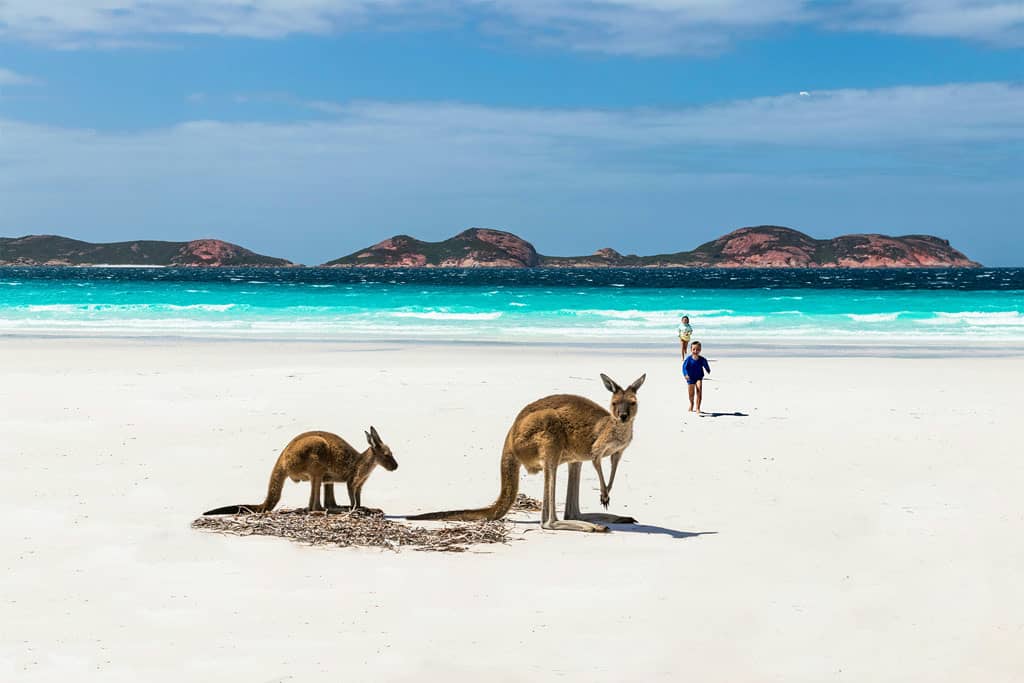
9. Take a quokka selfie on Rottnest Island
Another item to add to your Western Australia bucket list? A quokka selfie!
Quokkas are small marsupials affectionately known as the “world’s happiest animals” due to their characteristic smiles.
These friendly creatures are native to Rottnest Island and can often be seen around the main settlement areas, such as Thomson Bay, as well as in more secluded spots like Geordie Bay and the Wadjemup Lighthouse vicinity.
While quokkas are used to tourists, it’s important to be respectful and maintain a safe distance. Capturing a ‘quokka selfie’ has become a popular activity among visitors, but let the interactions happen naturally.
Other than seeing quokkas, you can also enjoy the scenic hiking and biking trails or go snorkelling in Little Salmon Bay on Rottnest Island. It’s one of the most popular day trips from Perth or Fremantle.
The easiest way to get to Rottnest Island is to book a tour from Perth that includes your short ferry ride and bike hire!
Read our guide to the best day trips from Perth for more fun ideas.
10. Fly over the Kimberley Coast
If you want to see the beautiful and remote Kimberley Coast in a short time frame, consider a scenic flight.
For those who don’t have a 4WD or heaps of time to plan a road trip, the best way to admire the Kimberley is from the sky!
You can book a scenic flight from Broome that takes you over some of the Kimberley’s coolest locations in just a couple of hours.
Scenic flights normally include views of the unique Horizontal Falls and the Buccaneer Archipelago, where rugged islands meet dramatic waterfalls.
Scenic flights also provide the best vantage point of the area’s rich natural colours, from the vibrant red Earth to the secluded beaches and sapphire waters.
11. See the world’s oldest living fossils
If you’re a history lover, add this one to your bucket list!
Seeing the stromatolites in Western Australia offers a rare glimpse into the Earth’s earliest life forms, making it a must-visit experience for both science lovers and curious travelers.
Found at places like Hamelin Pool in Shark Bay, a UNESCO World Heritage Site, the stromatolites are among the oldest living fossils on Earth, dating back over 3.5 billion years.
These rocky, reef-like formations grow extremely slowly in salty waters, which protect them from predators and disturbance.
Interpretive boardwalks allow visitors to observe the stromatolites up close without disturbing their fragile ecosystem. A visit here is a journey back in time to the very origins of life on our planet!
12. Go whale watching in winter
Whale watching in Western Australia is a breathtaking experience, offering the chance to witness the annual migration of majestic humpback, southern right, and even blue whales along the coast.
From June to December, thousands of whales travel north from Antarctica to breed in the warm waters off the Kimberley and Ningaloo Reef, then return south with their calves, passing close to shorelines and bays.
Top viewing spots include Busselton, Augusta, and Dunsborough in the south, and Exmouth and Broome further north—where boat tours and coastal lookouts provide unforgettable encounters.
Seeing a whale breach or tail-slap against a backdrop of rugged cliffs or turquoise sea is a highlight of any trip to Western Australia!
13. Camp in Cape Range National Park
Camping in Cape Range National Park is one of the best things to do in Western Australia for nature lovers.
The park has over 100 camping bays along its western shore, many of which are accessible via conventional 2WD vehicles.
Campgrounds such as Osprey Bay, Mesa, Tulki, and Kurrajong have unpowered sites nestled between sand dunes, offering partial protection from prevailing winds and proximity to the beach.
From the campsites, you can easily go swimming, snorkeling, and kayaking in the nearby Ningaloo Marine Park. Also be sure to check out some nearby landmarks like Yardie Creek Gorge, Charles Knife Canyon, and Mandu Mandu Gorge, which showcase the park’s rugged terrain.
Read next: The Perfect 5 Day Perth Itinerary
14. Explore Perth City
No visit to Western Australia is complete without a stop in Perth! The state’s sunny capital city is full of fun things to do for any type of traveller.
Set along the banks of the Swan River and fringed by white-sand beaches like Cottesloe and Scarborough, Perth invites visitors to enjoy outdoor living at its best.
Wander through the lush expanses of Kings Park and the Botanical Gardens, one of the world’s largest inner-city parks, for panoramic views and native flora.
Dive into the lively neighborhoods of Northbridge and Fremantle for buzzing markets, street art, and a thriving food and coffee scene.
Tour Perth Cultural Centre for museums, theatre, entertainment, or family-friendly attractions. Perth city has it all, so spend at least a day here exploring before you set off on any other Western Australia adventures!
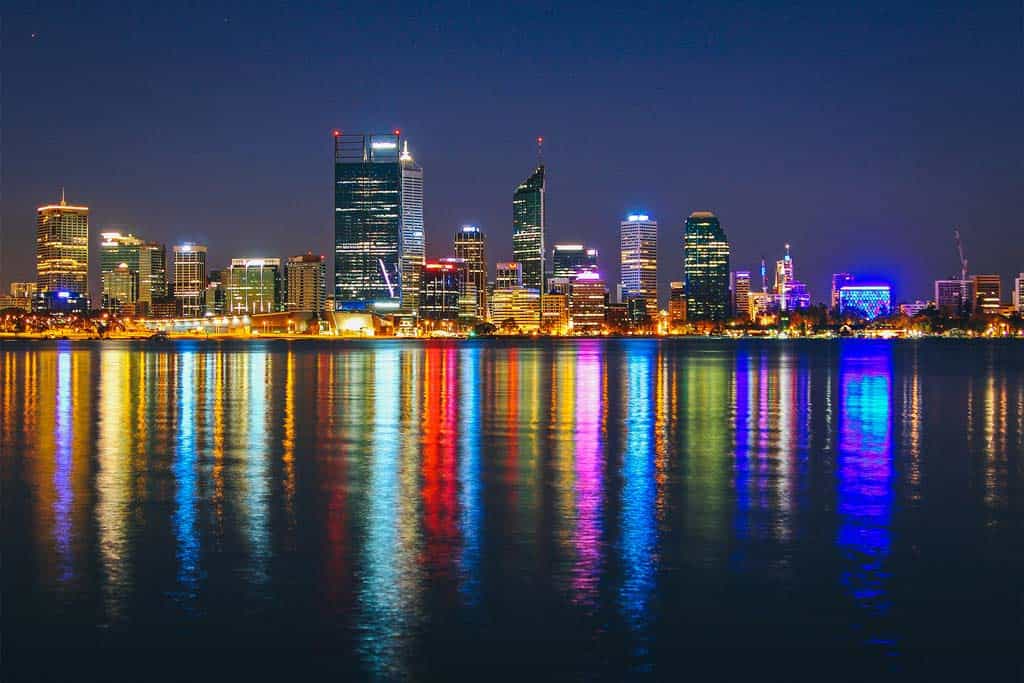
15. Visit the National Anzac Centre
Anyone interested in history will love to check out the National Anzac Centre!
Located in the south west of Australia near Albany, this museum is dedicated to honouring the Australian and New Zealand soldiers who served during World War I.
The centre is situated in the historic Princess Royal Fortress on Mount Adelaide, offering panoramic views of King George Sound (the departure point for over 41,000 troops bound for the Great War).
Visitors engage with the Anzac story through interactive exhibits, assuming the identity of one of 32 service men or women to follow their personal journey from recruitment to post-war life.
With multimedia displays, artefacts, and personal narratives, the National Anzac Centre creates an immersive experience.
16. See the unique rock formations in Torndirrup National Park
Torndirrup National Park, located on the rugged southern coast of Western Australia near Albany, is renowned for its dramatic coastal scenery and unique geological formations.
The park has iconic natural rock formations that are a must-see if you’re in the area.
First check out The Gap, where waves crash powerfully against a granite chasm. Also take a look at the Natural Bridge, a rock formation shaped by centuries of wind and ocean erosion.
Home to a variety of native flora and fauna, Torndirrup also offers breathtaking views of the Southern Ocean, scenic walking trails, and excellent whale-watching opportunities during migration season.
Read next: The Best Time to Visit Perth, Australia
17. Hike the Cape to Cape Track
The Cape to Cape Track is a stunning long-distance coastal hike stretching approximately 135 kilometers through Western Australia’s Margaret River region, from Cape Naturaliste in the north to Cape Leeuwin in the south.
Winding along the rugged Indian Ocean coastline, the trail offers hikers breathtaking views of towering sea cliffs, white sandy beaches, wildflower-filled heathlands, and ancient karri forests.
Along the way, walkers can discover hidden caves, spot dolphins and migrating whales, and enjoy peaceful moments in remote, unspoiled nature.
Whether completed as a full multi-day trek or explored in shorter sections, the Cape to Cape Track is one of the best things to do in Western Australia for hikers!
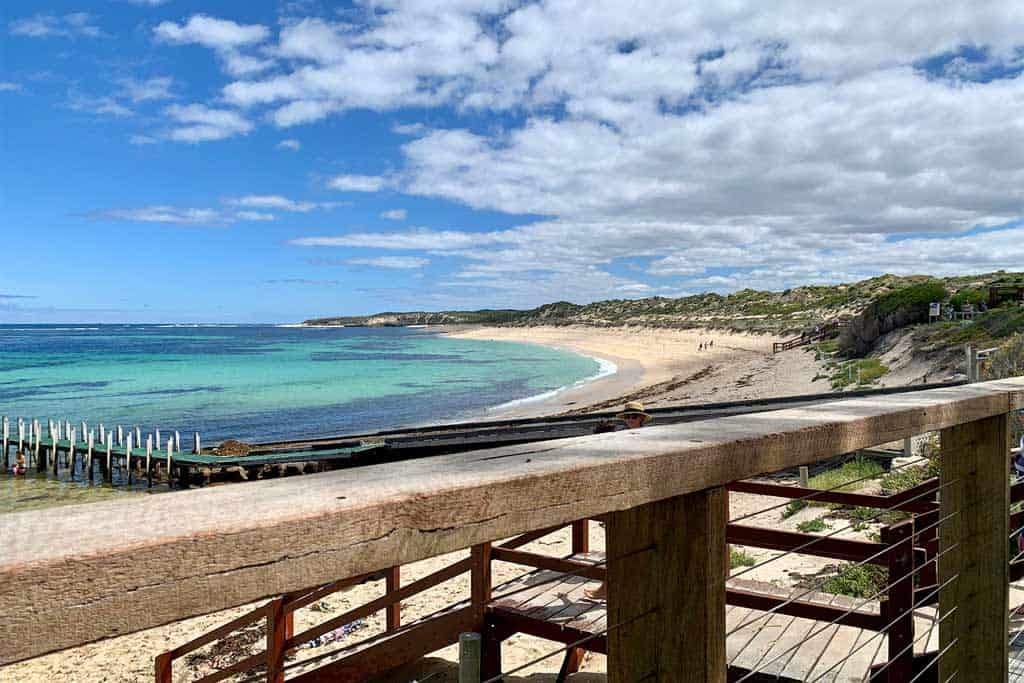
18. Experience the Kimberley’s coastal beauty in Cape Leveque
If you want to explore the remote Kimberley region of Western Australia, Cape Leveque is a great place to go.
Located at the northernmost tip of Western Australia’s Dampier Peninsula, Cape Leveque has striking red sandstone cliffs, pristine white sand beaches, and clear turquoise waters.
This remote destination, approximately 240 kilometers north of Broome, offers visitors a unique blend of natural beauty and rich Aboriginal heritage.
The area is traditionally owned by the Bardi people, who manage the Kooljaman eco-resort, providing an opportunity to experience Indigenous culture and hospitality firsthand.
Accessible via a fully sealed road, Cape Leveque invites travellers to explore its vibrant marine life, including nesting turtles and migrating humpback whales, and to witness breathtaking sunsets over the Indian Ocean.
The Cape Leveque Lighthouse is a magnificent historic landmark that guides ships through the western entrance of King Sound.
19. Beach hop in William Bay National Park
William Bay National Park, located along Western Australia’s Rainbow Coast near Denmark, is celebrated for its stunning coastal scenery and rich biodiversity.
The park’s crown jewels are Greens Pool and Elephant Rocks, where massive granite boulders create sheltered turquoise pools ideal for swimming and snorkeling.
Beyond these iconic spots, visitors can explore serene beaches like Madfish Bay and Waterfall Beach, as well as inland features such as Tower Hill and Parry Inlet.
There are so many tranquil beaches here with crystal clear waters where visitors of all ages can enjoy the sand, sun, and sea of Australia’s south west.
20. Cruise along the Swan River
While visiting the Perth area, treat yourself to a Swan River cruise. This is one of the best ways to sightsee around the city and relax during an action-packed trip.
Swan River cruises usually glide past notable sites such as the Bell Tower, Kings Park, the historic Swan Brewery, and the Royal Perth Yacht Club, all while providing captivating views of the city’s skyline and luxurious waterfront homes.
Many cruises feature live commentary, enriching the journey with insights into Perth’s history and the significance of the Swan River.
Cruise options range from scenic round-trip voyages to Fremantle to indulgent lunch or dinner cruises that showcase Western Australia’s local produce.
21. Admire the wildflowers in Kalbarri National Park
Kalbarri National Park is a stunning nature reserve on the mid west coast of the state. It’s a popular place to stop on road trips north from Perth up to Broome or Exmouth.
Kalbarri National Park has some incredible wildflower displays, with over 800 species blooming between late winter and early summer.
Go hiking, camping, or birdwatching to get the best views of the colourful blooms!
Other cool things to do in the national park include the Kalbarri Skywalk, hiking through Murchison River Gorge, and admiring geological sites such as Nature’s Window and Z Bend.
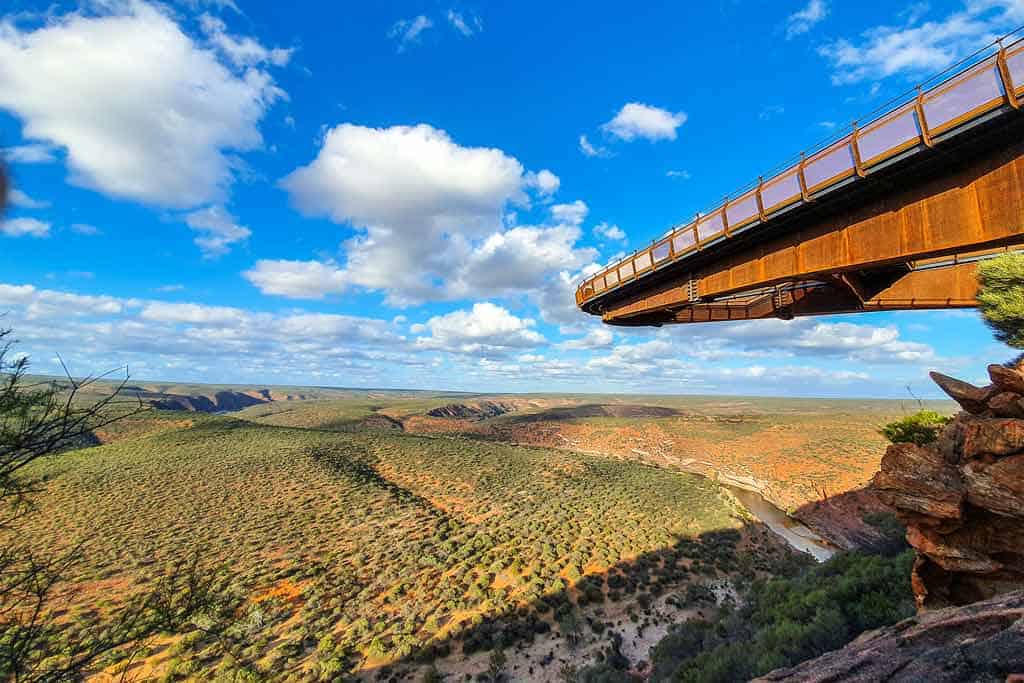
22. See the Wave Rock
Wave Rock is another popular bucket list location for travellers in Western Australia.
Located near Hyden in the south west of Australia, Wave Rock is a 15-meter-high, 110-meter-long granite cliff that resembles a massive ocean wave.
The landmark is known as Katter Kich to the Ballardong people of the Noongar nation, and has a deep cultural significance.
The Ballardong people consider it a sacred site, and it is part of a broader Dreaming trail. Visitors can explore nearby attractions such as Hippo’s Yawn and Mulka’s Cave, as well as enjoy seasonal wildflower displays and interpretive walking trails.
Join a Wave Rock Cultural Tour from Perth to make the most of your visit!
Try a cross country road trip with a drive from Sydney to Perth!
23. Go 4WDing in Francois Peron National Park
Western Australia has lots of amazing tracks for 4WD enthusiasts.
One of the coolest places to drive your 4WD is Francois Peron National Park, located on the Peron Peninsula within Western Australia’s Shark Bay World Heritage Area.
This is where you will find the iconic scenery of rich red desert cliffs sitting next to turquoise waters and white sand beaches.
Traversing the park’s sandy tracks requires a high-clearance 4WD, leading explorers to remote coastal lookouts like Skipjack Point and Cape Peron, where sightings of dolphins, dugongs, turtles, and rays are common.
Guided tours, such as those offered by Wula Gura Nyinda Eco Adventures combine 4WD adventures with Aboriginal cultural insights, including bush tucker and traditional medicine knowledge.
Many tours include opportunities for snorkeling in sheltered bays like Bottle Bay and conclude with a relaxing soak in the artesian hot tub at the historic Peron Homestead.
Whether you have your own 4WD or you’re joining a guided excursion, this is definitely a bucket list experience!
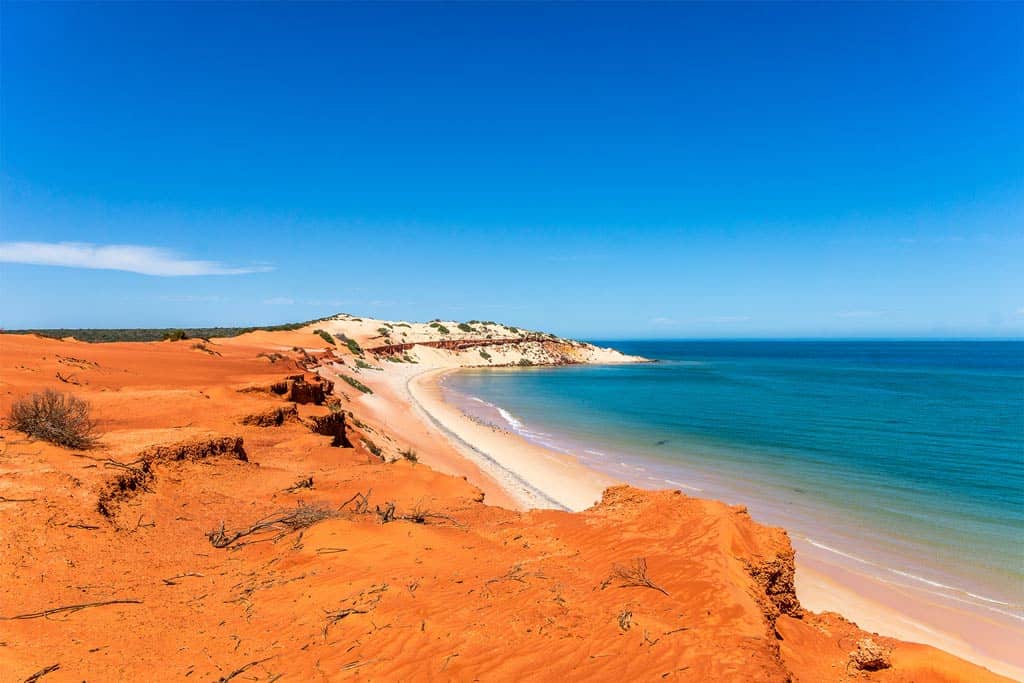
24. Tour Fremantle Prison
Fremantle Prison is one of the top landmarks to visit in Fremantle, a bustling suburb of Perth.
The prison is a World Heritage-listed site that stands as one of the most well-preserved convict-era prisons in the world.
Built by British convicts in the 1850s, Fremantle Prison is an amazing glimpsi into Australia’s colonial past and penal history.
With its limestone walls, solitary confinement cells, and execution chambers, it provides a sobering insight into life behind bars through guided tours that explore themes of punishment, reform, and escape.
Today, Fremantle Prison serves as a major cultural attraction, blending history, architecture, and storytelling to engage visitors with a dark but significant chapter of Australia’s heritage.
DISCLAIMER: Some of the links in this article are affiliate links, which means if you book accommodation, tours or buy a product, we will receive a small commission at no extra cost to you. These commissions help us keep creating more free travel content to help people plan their holidays and adventures. We only recommend the best accommodations, tours and products that ourselves or our fantastic editorial team have personally experienced, and regularly review these. Thanks for your support, kind friend!
